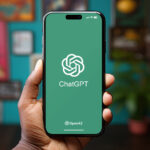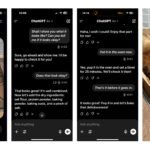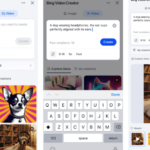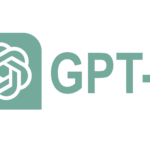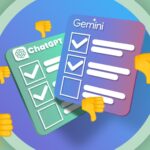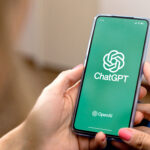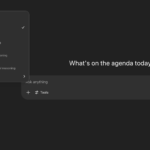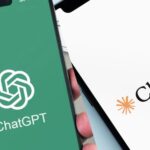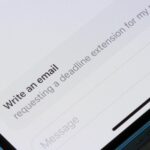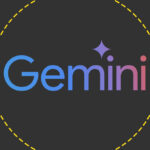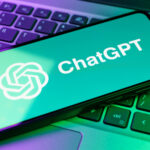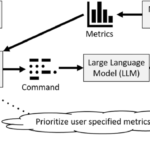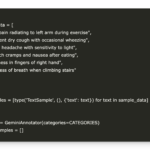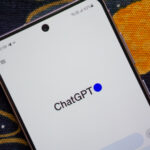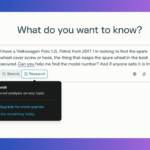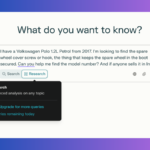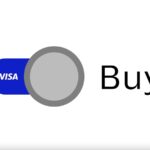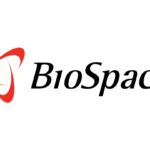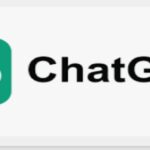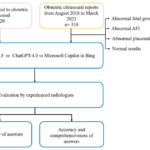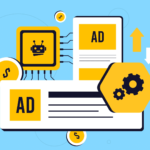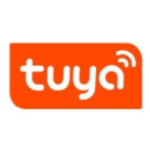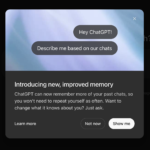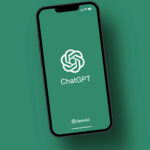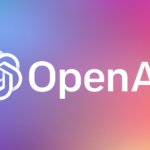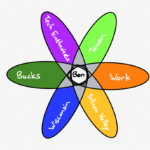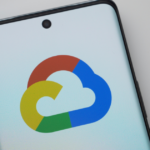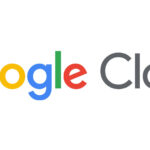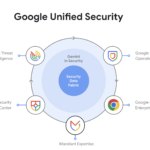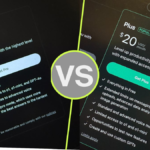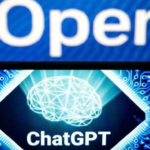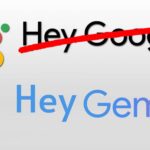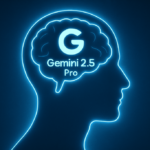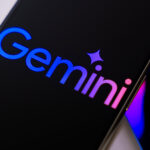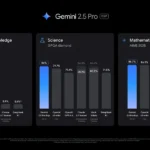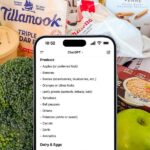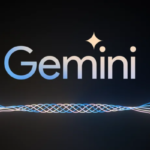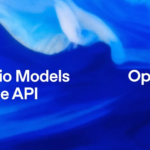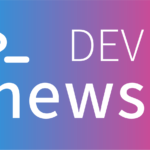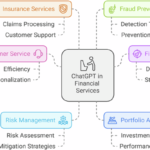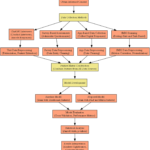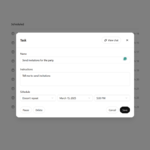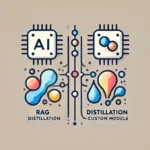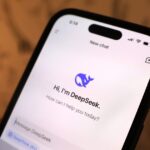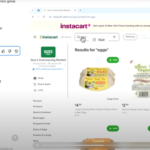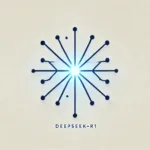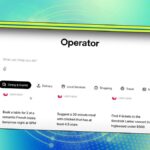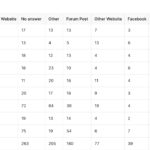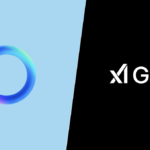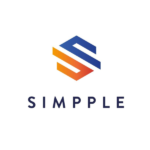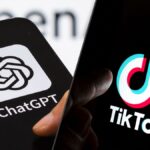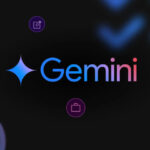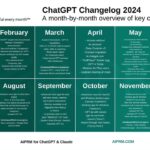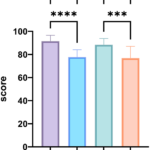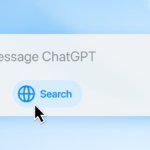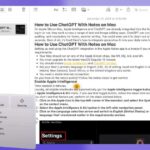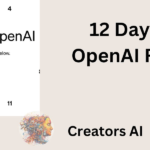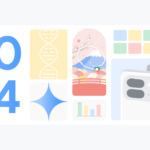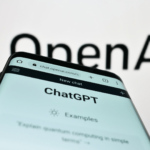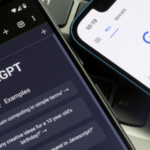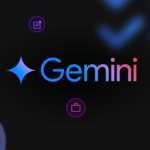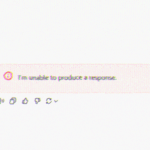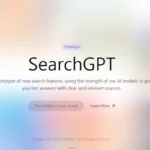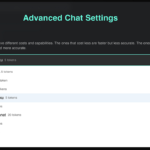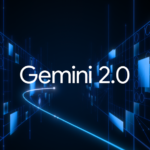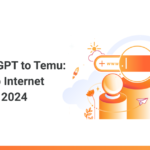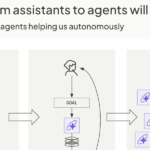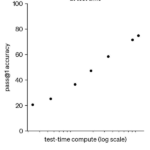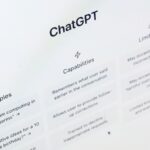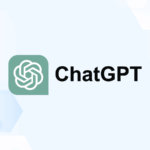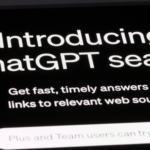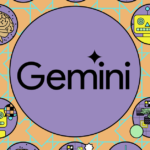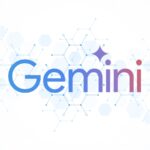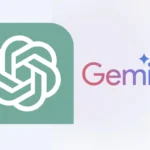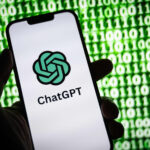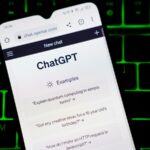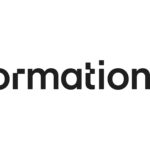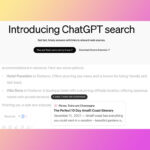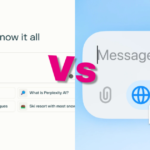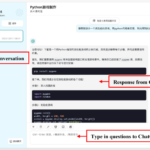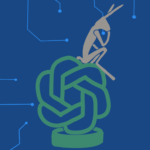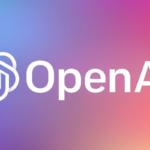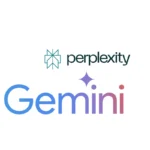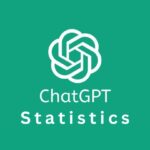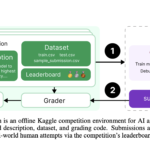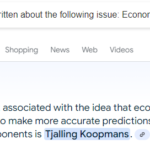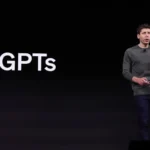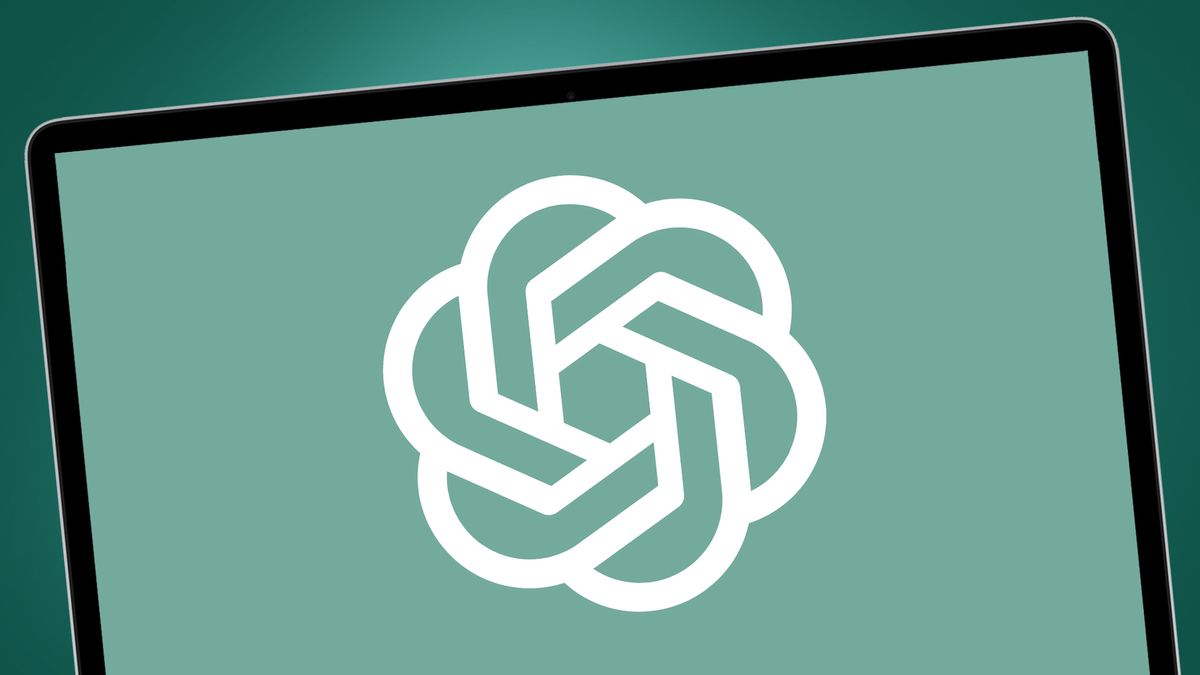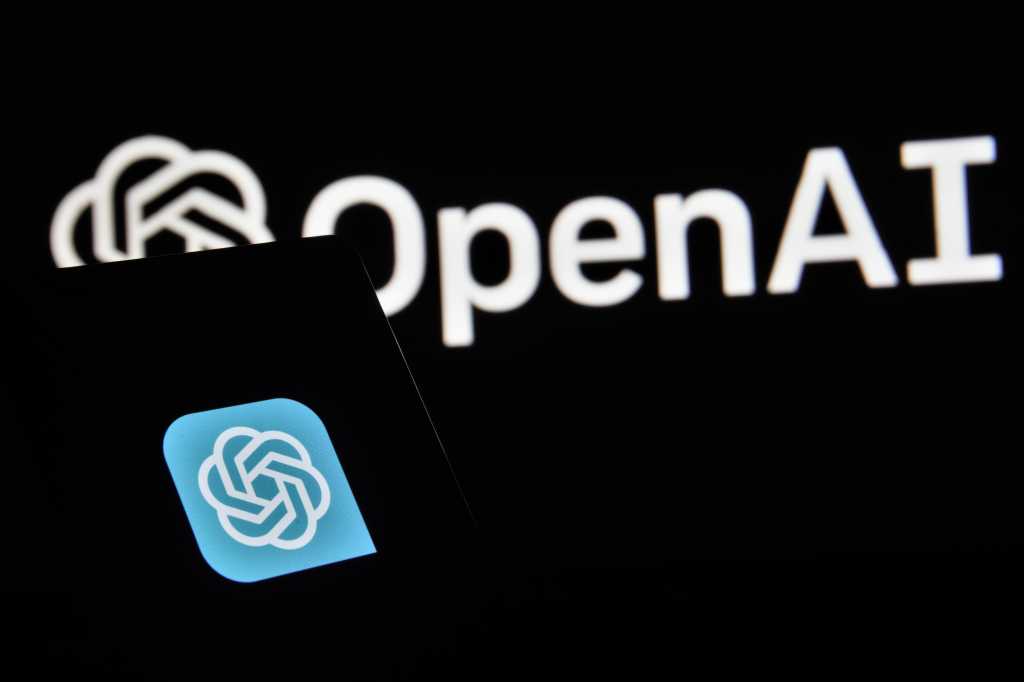Noticias
100 best ChatGPT prompts for business
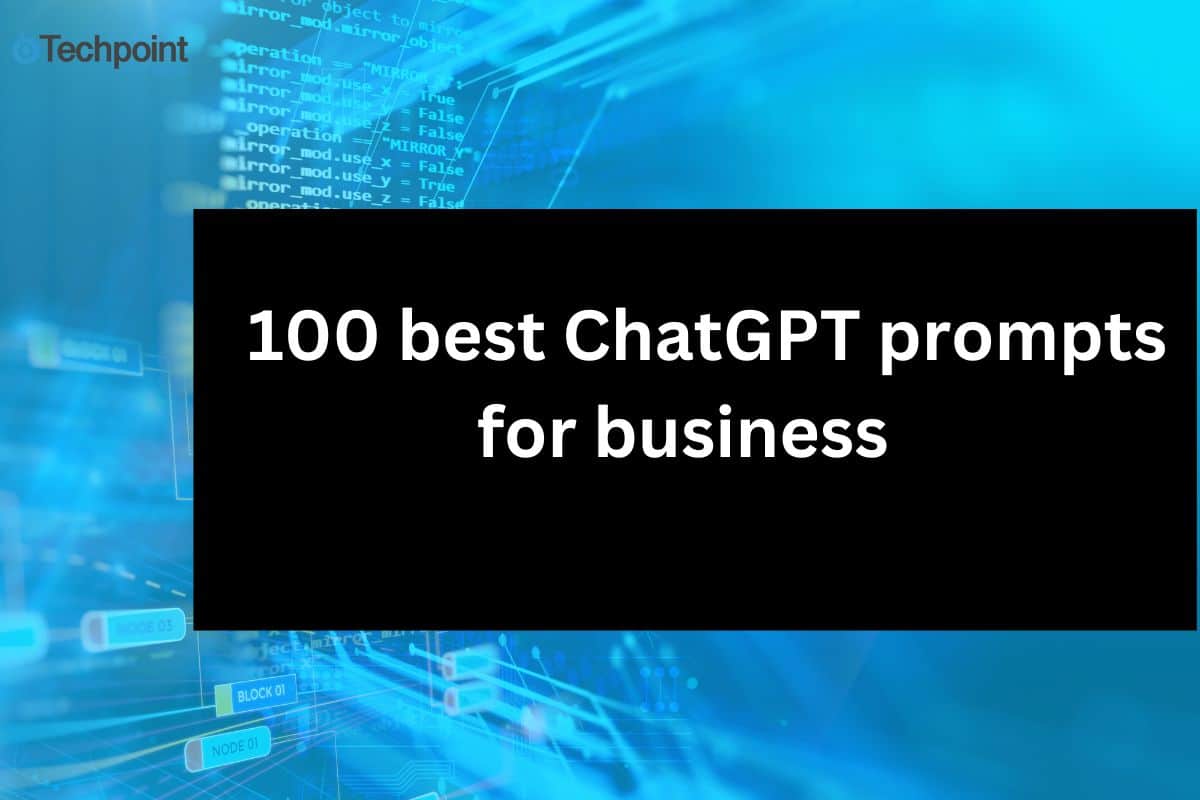
As a writer and business professional constantly balancing deadlines, strategy sessions, and content creation, I’m always looking for tools that can boost productivity without compromising quality. That’s what initially led me to ChatGPT.
At first, I only used it for the basics: brainstorming blog post ideas, generating article outlines, and fine-tuning first drafts. It was a handy writing assistant, but I didn’t see it as much more than that.
Then, I started hearing stories from other entrepreneurs using ChatGPT in ways I hadn’t even considered — refining marketing strategies, optimizing business workflows, and automating customer service. That’s when it hit me: I had barely scratched the surface.
Could ChatGPT help streamline my business operations? Could it take my marketing game to the next level? I had to find out.
But I quickly realized that ChatGPT is only as powerful as the prompts you give it; generic prompts led to generic responses. But with the right prompts, the results were game-changing.
So, I set out on a deep dive. I spent days researching, experimenting, and fine-tuning prompts across various business functions. The goal was to unlock ChatGPT’s full potential and make it a true asset for business owners, marketers, and professionals like you.
Here’s what I found.
TL;DR: Key takeaways from this article
- The right ChatGPT prompts can significantly enhance business productivity.
- Vague prompts lead to mediocre results; specific, well-structured prompts unlock ChatGPT’s full potential.
- ChatGPT can be a powerful tool for marketing, content creation, customer service, data analysis, and business strategy.
- Continuously refining and experimenting with prompts improves both accuracy and effectiveness.
- Hands-on testing reveals what truly works and what doesn’t when you use ChatGPT for business.
What is ChatGPT?
ChatGPT, short for Chat Generative Pre-trained Transformer, is an advanced AI-powered language model designed to facilitate natural, human-like conversations. Built on impressive natural language processing (NLP) technology, it enables users to interact with AI in a way that feels intuitive, seamless, and highly responsive.
Beyond casual conversations, ChatGPT has become a powerful tool for business professionals, content creators, and marketers. When prompted effectively, it can assist with everything from drafting personalized resumes and cover letters to generating strategic insights, refining customer service responses, and even streamlining complex workflows.
What is a ChatGPT prompt?
A ChatGPT prompt is the instruction or question you provide to the AI; it’s the foundation of the response you’ll receive. Think of it as giving directions to a GPS; the more specific you are, the better the AI can navigate toward the result you want.
For business writing, a vague prompt like “Summarize my experience in marketing” will generate a broad response. Instead, refining it to “Highlight how I developed and executed a content strategy that increased organic traffic by 150% in six months, detailing key challenges and strategies used” will produce a more specific and impactful output.
The key to unlocking ChatGPT’s full potential lies in precision and clarity. The more specific your instructions, the better the AI can deliver responses that align with your needs, it doesn’t matter if it’s marketing strategies or customer engagement.
Why I turned to ChatGPT for business productivity
My initial goal with ChatGPT was simple: streamline business tasks and boost efficiency. I wanted to see if AI could help with marketing ideas, customer service responses, and other essential operations.
At first, my prompts were too broad, which led to generic, uninspired responses. However, once I started refining my approach and making my instructions more detailed and specific, ChatGPT’s output quality improved dramatically.
How I researched and tested ChatGPT prompts
To find the most effective business prompts, I took a hands-on approach:
- Studying high-performing prompts from experts.
- Experimenting with different levels of specificity.
- Tweaking and iterating based on the responses I received.
- Comparing ChatGPT’s output to human-generated content to gauge effectiveness.
Through this process, I identified the most valuable ChatGPT prompts for various business functions. Below are the ones I’ve personally tested and found to be game-changers.
My favorite 100 ChatGPT prompts for business (categorized by section)
After extensive testing and refinement, I’ve compiled a list of 100 must-use ChatGPT prompts designed to enhance productivity across various business functions. If you need help with marketing, customer service, content creation, or data analysis, these prompts will help you unlock ChatGPT’s full potential.
To make things easier, I’ve categorized them by function, so you can quickly find the ones that fit your needs.
Note:: You may have to copy and paste examples and references to get better results.
Let’s get in.
1. Prompt for generating business ideas
Coming up with innovative business ideas is more than just about brainstorming; it’s about identifying market gaps, leveraging trends, and considering unique angles. From budding entrepreneurs to established business leaders looking to pivot, these ChatGPT prompts will help spark fresh, viable ideas tailored to your needs.
1. Prompt: “Create five innovative business ideas for a [specific industry] targeting [specific audience] with a budget of [amount].”
Example: “Create five innovative business ideas for the fitness industry targeting busy professionals with a budget of $10,000.”
2. Prompt: “Highlight niche markets in [industry] with growth potential and explain why they are promising.”
Example: “Highlight niche markets in the pet industry with growth potential and explain why they are promising.”
3. Prompt: “Examine current trends in [industry] and suggest creative ways they could be applied to new business models.”
Example: “Examine current trends in the AI industry and suggest creative ways they could be applied to small business solutions.”
4. Prompt: “Analyze the competitive landscape of [industry] and suggest untapped business opportunities.”
Example: “Analyze the competitive landscape of the online education industry and suggest untapped business opportunities.”
5. Prompt: “Conceptualize business solutions focused on sustainability in [industry], explaining how [specific job roles] can thrive in this space.”
Example: “Conceptualize business solutions focused on sustainability in the fashion industry, explaining how independent designers can thrive in this space.”
6. Prompt: “Identify business ideas that leverage emerging technology in [industry] and outline potential challenges and benefits.”
Example: “Identify business ideas that leverage blockchain technology in the real estate industry and outline potential challenges and benefits.”
7. Prompt: “Develop five business ideas based on solving common frustrations experienced by [specific group].”
Example: “Develop five business ideas based on solving common frustrations experienced by remote workers.”
8. Prompt: “Suggest three business ideas that could work in a low-competition market in the [industry] and explain how you came to that conclusion.”
Example: “Suggest three business ideas that could work in a low-competition market in the home automation space and explain how you came to that conclusion.”
9. Prompt: “Generate business ideas that align with [specific group] consumer preferences and purchasing behavior.”
Example: “Generate business ideas that align with Gen Z consumer preferences and purchasing behavior.”
10. Prompt: “Propose a business idea that can be launched with minimal startup costs and explain the step-by-step process.”
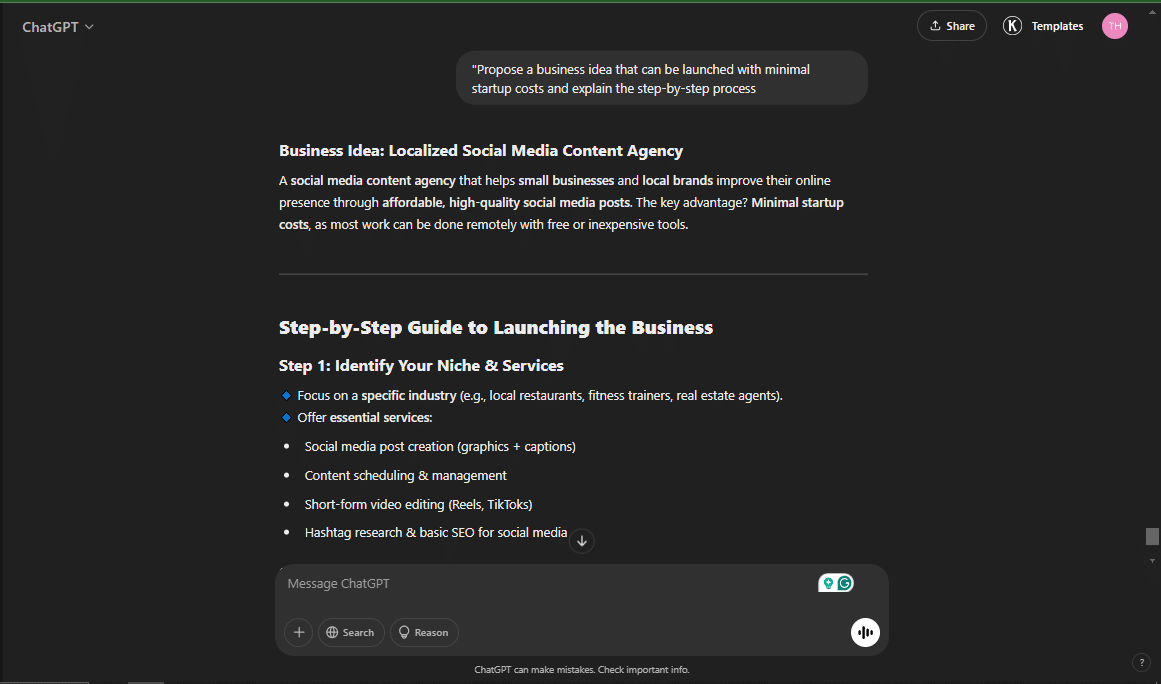
2. Prompt for content creation
Creating compelling content requires strategy, audience alignment, and optimization. These ChatGPT prompts will help you generate high-quality content that resonates with your audience and they cover blog posts, website copy, social media, or YouTube script.
11. Prompt: “Write a compelling blog post outline on [topic] that appeals to [target audience] and includes three key takeaways.”
Example: “Write a compelling blog post outline on ‘Sustainable Fashion Trends in 2025’ that appeals to eco-conscious consumers and includes three key takeaways.”
12. Prompt: “I’m writing content for a website that focuses on [niche]. Based on the site’s niche, come up with a list of [number] engaging, informative topics that reflect search intent, reinforce its topical authority, and provide interlinking opportunities. For each topic, include:
- Why you chose it
- How it relates to the site’s identity
- What angles should be used for the post
- A detailed outline
- Potential interlinking opportunities”
Example: “I’m writing content for a website that focuses on personal finance. Based on the site’s niche, come up with a list of 10 engaging, informative topics that reflect search intent, reinforce its topical authority, and provide interlinking opportunities. For each topic, include:
- Why you chose it
- How it relates to the site’s identity
- What angles should be used for the post
- A detailed outline”
13. Prompt: “I’m not happy with your output below because [reasons]. Please rewrite this passage and make sure the new output rectifies these issues.”
Example: “I’m not happy with your output below because it lacks detail, and where it does have detail, it’s too verbose. Please rewrite this passage and ensure the new output is concise yet informative.”
14. Prompt: “The post below aims to [explain/define/compare] [concept/idea/suggestion]. Please review and critique it for me, while paying particular attention to the richness of details, readability, engagement, tone, and contextual flow. Provide a rationale with your feedback and offer suggestions to improve the content.”
Example: “The post below aims to compare different AI writing tools. Please review and critique it for me, while paying particular attention to the richness of the detail, readability, engagement, tone, and contextual flow. Provide a rationale with your feedback and offer improvement suggestions.”
15. Prompt: “Create a YouTube script outline for a video titled ‘[Title]’. The script should be structured with an engaging hook, an introduction, main content points, and a call to action.”
Example: “Create a YouTube script outline for a video titled ‘How to Start a Profitable Dropshipping Business in 2025.’ The script should include an engaging hook, introduction, main content points, and a call to action.”
16. Prompt: “Generate five YouTube video ideas for a channel focused on [niche], ensuring they have high engagement potential and SEO value. For each idea, include a suggested title, target audience, and key talking points.”
Example: “Generate five YouTube video ideas for a channel focused on personal finance, ensuring they have high engagement potential and SEO value. For each idea, include a suggested title, target audience, and key talking points.”
17. Prompt: “Write a YouTube video description for a video about [topic]. Include a compelling summary, relevant keywords, and a CTA that encourages engagement.”
Example: “Write a YouTube video description for a video about ‘The Best AI Tools for Productivity in 2025.’ Include a compelling summary, relevant keywords, and a CTA that encourages engagement.”
18. Prompt: “Come up with five engaging X (formerly Twitter) threads on [topic]. Each thread should be structured with a compelling first tweet, key insights, and a closing tweet that encourages discussion.”
Example: “Generate five engaging X (formerly Twitter) threads on ‘How to build multiple streams of income.’ Each thread should be structured with a compelling first tweet, key insights, and a closing tweet that encourages discussion.”
19. Prompt: “Based on the list of keywords below, give me [number] Instagram and TikTok topics for a brand focused on [niche/business]. Explain why it fits.”
Example: “Based on the keywords ‘AI writing tools, content automation, and SEO optimization,’ give me five Instagram and TikTok topics for a brand focused on digital marketing. Explain why each topic fits the blog’s identity.”
20. Prompt: “Write an engaging LinkedIn post about [topic] that positions me as a thought leader in [industry]. Ensure it starts with a strong hook, provides valuable insight, and ends with a call to action.”
Example: “Write an engaging LinkedIn post about ‘The future of AI in content marketing’ that positions me as a thought leader in digital marketing. Ensure it starts with a strong hook, provides valuable insight, and ends with a call to action.”
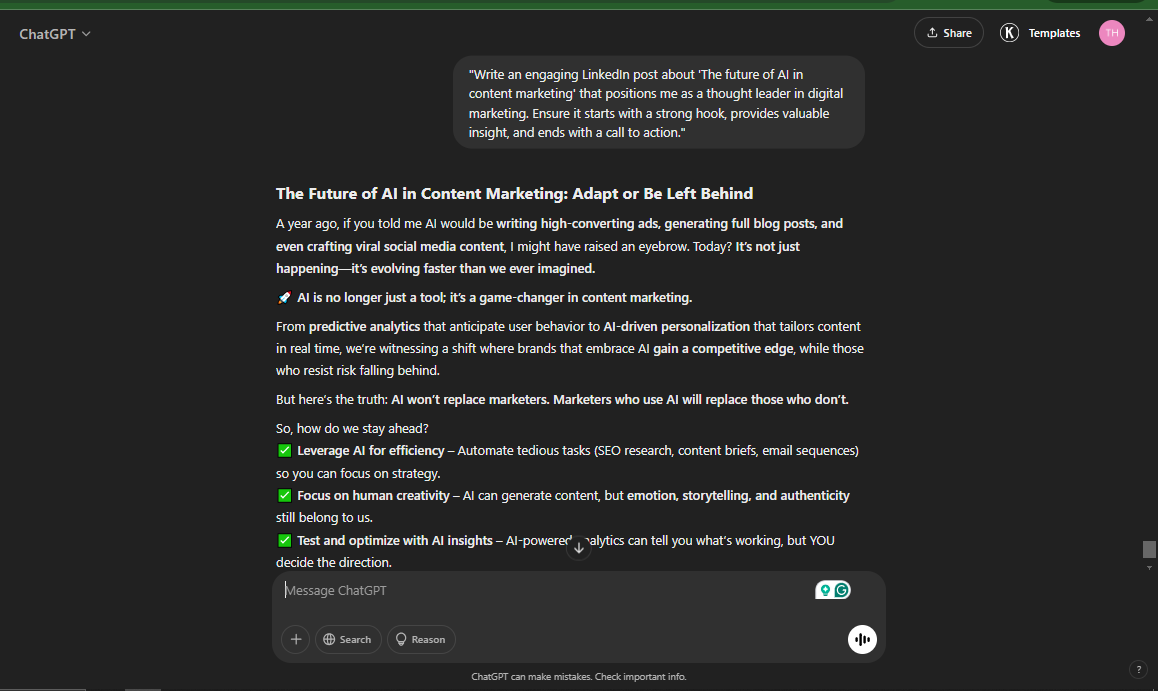
3. Prompts for teambuilding and management
21. Prompt: “You are a leadership coach. Guide me through fostering a high-performance team culture in a [work arrangement] environment. Include specific strategies for communication, accountability, and motivation.”
Example: “You are a leadership coach. Guide me through fostering a high-performance team culture in a remote or hybrid work environment. Include specific strategies for communication, accountability, and motivation.”
22. Prompts: “I manage a diverse team, and conflicts sometimes arise. Provide a step-by-step conflict resolution framework that promotes healthy discussions and strengthens team relationships.”
23. Prompt: “As an HR leader, I want to boost employee engagement and reduce turnover. Share actionable strategies for creating a workplace where employees feel valued, motivated, and aligned with company goals.”
24. Prompt: “Many of my managers struggle with delegation. Outline a method for effective delegation that empowers employees while ensuring accountability, without falling into the trap of micromanagement.”
25. Prompt: “I’ve recently been promoted to a managerial role. What are the key leadership skills I need to develop, and how can I transition smoothly from an individual contributor to a team leader?”
4. Prompts for productivity and time management
26. Prompt: “I struggle with procrastination and managing my time effectively. How can AI tools like ChatGPT help me break tasks into manageable steps and stay on track?”
27. Prompt: “Help me design a productivity-boosting daily routine using principles from time management frameworks like the Eisenhower Matrix or Pomodoro Technique.”
28. Prompt: “In a fast-paced work environment, it’s hard to find uninterrupted focus time. Provide strategies to balance deep work sessions with necessary meetings, without losing productivity.”
5. Prompts for legal and compliance
29. Prompt: “I’m starting a [type of business] in [location]. What are the key legal requirements I should be aware of (e.g., business structure, contracts, intellectual property, compliance) to avoid costly mistakes?”
Example: “I’m starting a hair salon business in Nigeria. What are the key legal requirements I should be aware of (e.g., business structure, contracts, intellectual property, compliance) to avoid costly mistakes?”
30. Prompts: “My company operates an online platform. Guide me through the essential steps to ensure compliance with global data privacy laws like GDPR and CCPA, while maintaining a user-friendly experience.”
6. Prompt for customer service responses and satisfaction
Customer service is a critical part of any business, and AI-powered responses can help streamline communication while maintaining professionalism, empathy, and efficiency. These ChatGPT prompts will help craft thoughtful, customer-focused interactions that enhance satisfaction and retention.
31. Prompt: “Generate a polite and professional response to a customer complaint about [issue]. Ensure the response acknowledges the frustration, apologizes for the delay and offers a resolution.”
Example: “Generate a polite and professional response to a customer complaint about a delayed shipment. Ensure the response acknowledges the frustration, apologizes for the delay and offers a resolution.”
32. Prompt: “Recommend best practices for [industry] customer service, focusing on improving response times, handling difficult customers, and increasing satisfaction.”
Example: “Recommend best practices for eCommerce customer service, focusing on improving response times, handling difficult customers, and increasing satisfaction.”
33. Prompt: “Write a friendly and professional response to a customer inquiry about [product/service], ensuring clarity and enthusiasm.”
Example: “Write a friendly and professional response to a customer inquiry about the features of our premium subscription plan, ensuring clarity and enthusiasm.”
34. Prompt: “Craft a personalized follow-up email for a customer who recently purchased [product/service], thanking them and offering [additional support or a discount for their next purchase].”
Example: “Craft a personalized follow-up email for a customer who recently purchased a fitness tracker, thanking them and offering tips on how to maximize its features.”
35. Prompt: “Generate an apology email for a customer who experienced [specific issue], ensuring the response acknowledges the problem, expresses regret, and provides a resolution or compensation.”
Example: “Generate an apology email for a customer who received a defective product, ensuring the response acknowledges the problem, expresses regret, and provides a resolution or compensation.”
36. Prompt: “Create a chatbot script that can handle frequently asked questions about [product/service], including pricing, delivery times, and subscription options. The script should be friendly, concise, and direct users to additional resources when needed.”
Example: “Create a chatbot script that can handle frequently asked questions about our meal delivery service, including pricing, delivery times, and subscription options. The script should be friendly, concise, and direct users to additional resources when needed.”
37. Prompt: “Write a response for a customer who left a negative review about [issue], turning the situation around with professionalism and a proactive solution.”
Example: “Write a response for a customer who left a negative review about slow customer support, turning the situation around with professionalism and a proactive solution.”
38. Prompt: “Draft a concise and engaging survey email asking customers to rate their experience with [product/service] and provide feedback for improvement.”
Example: “Draft a concise and engaging survey email asking customers to rate their experience with our mobile banking app and provide feedback for improvement.”
39. Prompt: “Create a polite yet firm response for a customer requesting a refund on a [product/service] outside the return policy window, explaining the policy while offering alternative solutions and maintaining good customer relations.”
Example: “Create a polite yet firm response for a customer requesting a refund on a digital product outside the return policy window, explaining the policy while offering alternative solutions and maintaining good customer relations.”
40. Prompt: “Generate a warm and personalized thank-you message for a customer who has been subscribed to our service for three years, recognizing their loyalty and offering a discount on their next renewal.”
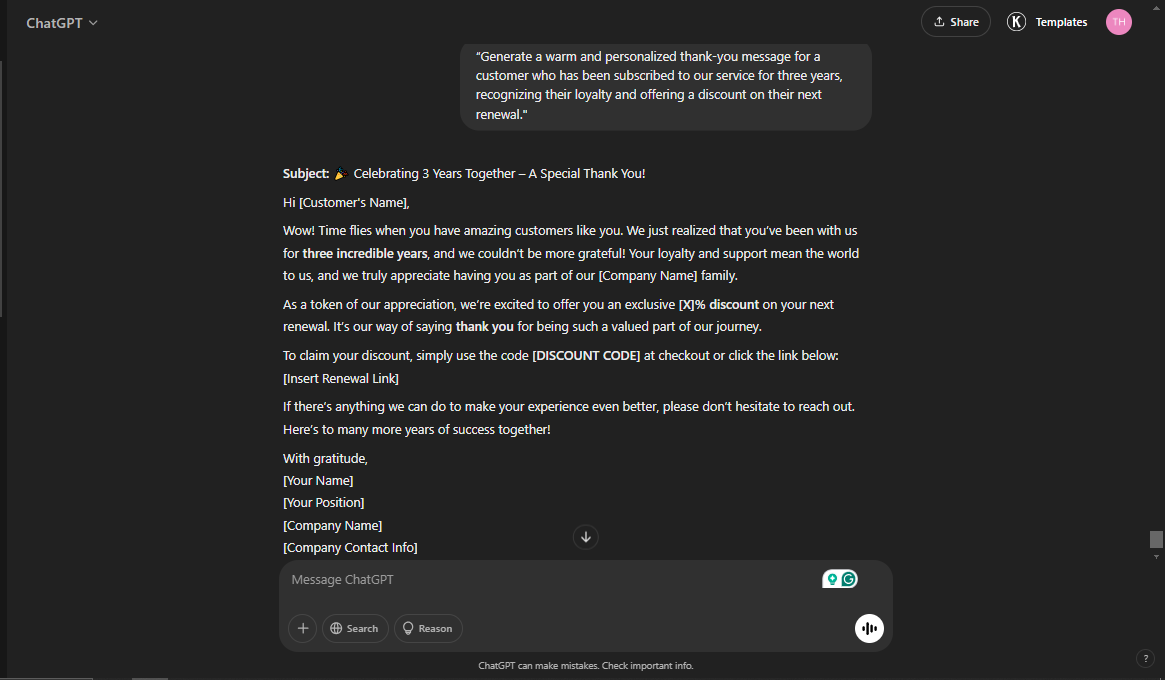
7. Prompt for data analysis summaries
Data analysis is crucial for making informed business decisions. These ChatGPT prompts will help generate clear, actionable summaries of complex data, making it easier to extract insights and apply them effectively.
41. Prompt: “Summarize key findings from the [type] data report below in simple, actionable insights for a business owner.”
Example: “Summarize key findings from the quarterly sales report below in simple, actionable insights for a retail store owner.”
42. Prompt: “Generate this industry report summary based on the latest data trends in [industry], highlighting key takeaways and future projections.”
Example: “Generate this industry report summary based on the latest data trends in the fintech sector, highlighting key takeaways and future projections.”
43. Prompt: “Analyze an in-house survey on [topic] and summarize key patterns, customer sentiment, and recommended next steps.”
Example: “Analyze an in-house survey on customer satisfaction with our online store and summarize key patterns, customer sentiment, and recommended next steps.”
44. Prompt: “Provide a high-level executive summary of a complex data analysis report on [topic] for [a professional], ensuring clarity and relevance to stakeholders.”
Example: “Provide a high-level executive summary of a complex data analysis report on employee performance metrics for HR executives, ensuring clarity and relevance to stakeholders.”
45. Prompt: “Break down a market research report on [subject] into digestible bullet points that highlight growth opportunities, risks, and competitor analysis.”
Example: “Break down a market research report on electric vehicles into digestible bullet points that highlight growth opportunities, risks, and competitor analysis.”
46. Prompt: “Translate technical data from [source] into a clear, engaging summary for a [non-technical audience], focusing on key insights and business impact.”
Example: “Translate technical data from a cybersecurity risk assessment into a clear, engaging summary for company executives, focusing on key insights and business impact.”
47. Prompt: “Draft a one-page report summarizing recent data trends in [area], including visual representation recommendations (charts, graphs, or infographics).”
Example: “Draft a one-page report summarizing recent data trends in consumer spending behavior, including visual representation recommendations (charts, graphs, or infographics).”
48. Prompt: “Analyze sales performance data from [period] and generate an insightful summary, highlighting successes, areas for improvement, and strategic recommendations.”
Example: “Analyze sales performance data from Q1 2024 and generate an insightful summary, highlighting successes, areas for improvement, and strategic recommendations.”
8. Prompt for business strategy brainstorming
Writing a winning business strategy requires creativity, foresight, and data-driven insights. The right prompts can help you uncover innovative growth opportunities, competitive advantages, and long-term sustainability plans.
These prompts will guide ChatGPT to generate actionable strategies tailored to your business needs.
49. Prompt: “List five creative business growth ideas for a startup in [industry] based on emerging trends.”
Example: “List five creative business growth ideas for a startup in the fitness tech industry based on emerging trends.”
50. Prompt: “Identify three strategic partnerships a [business type] could form to expand its market reach and explain the benefits of each.”
Example: “Identify three strategic partnerships a small SaaS company could form to expand its market reach and explain the benefits of each.”
51. Prompt: “Develop a competitive differentiation strategy for a [business type] that wants to stand out in a crowded market.”
Example: “Develop a competitive differentiation strategy for an online bookstore that wants to stand out in a crowded market.”
52. Prompt: “Analyze the strengths and weaknesses of [business model] and suggest ways to optimize profitability and efficiency.”
Example: “Analyze the strengths and weaknesses of a subscription-based eCommerce business and suggest ways to optimize profitability and efficiency.”
53. Prompt: “Suggest three pivot strategies for a struggling [business type] and explain the potential risks and rewards.”
Example: “Suggest three pivot strategies for a struggling local coffee shop and explain the potential risks and rewards.”
54. Prompt: “Generate an actionable five-step plan for scaling a [business type] from a small operation to a national brand.”
Example: “Generate an actionable five-step plan for scaling a handmade skincare business from a small operation to a national brand.”
55. Prompt: “Brainstorm ways a [business type] can leverage AI and automation to improve efficiency and reduce costs.”
Example: “Brainstorm ways a logistics company can leverage AI and automation to improve efficiency and reduce costs.”
56. Prompt: “Outline a market entry strategy for a [business type] looking to expand into [new region or country].”
Example: “Outline a market entry strategy for a fintech startup looking to expand into Southeast Asia.”
57. Prompt: “Identify potential revenue streams for a [business type] beyond its core product or service and explain their feasibility.”
Example: “Identify potential revenue streams for a podcast production company beyond its core service and explain their feasibility.”
58. Prompt: “Craft a long-term sustainability strategy for a [business type] that prioritizes profitability, social impact, and environmental responsibility.”
Example: “Craft a long-term sustainability strategy for an eco-friendly fashion brand that prioritizes profitability, social impact, and environmental responsibility.”
9. Prompt for email outreach and business communications
Effective business communication requires clarity, professionalism, and a tone suited to the situation. Whether you’re announcing a product, handling customer concerns, or sending a persuasive marketing email, the right prompt can help ChatGPT craft messages that drive engagement and achieve your goals.
59. Prompt: “Write an email announcing [describe the announcement details]. The email is intended for [describe audience]. Please use a [formal/informal/celebratory/somber] tone and style.”
Example: “Write an email announcing our company’s rebranding. The email is intended for existing customers and partners. Please use a formal yet enthusiastic tone.”
60. Prompt: “Please write a compelling, engaging email for a marketing campaign for [product]. The product is [overview/features/benefits/target users]. This product is [being launched/discounted] on [date]/from [date] to [date]. The call to action is [insert CTA].”
Example: “Please write a compelling, engaging email for a marketing campaign for our new AI-powered CRM tool. The product helps small businesses automate customer interactions, track engagement, and improve retention. This product is being launched on March 15. The call to action is ‘Sign up for early access now!’ “
61. Prompt: “Write an email inviting recipients to [event description and purpose]. The event will take place at [venue, time, date]. [Share other pertinent details — dress code, program, etc., as needed]. Ask the invitees to RSVP by [time/date].”
Example: “Write an email inviting recipients to our annual networking event for startup founders. The event will take place at The Grand Hotel, Downtown, on April 20 at 6 PM. Dress code: business casual. Please RSVP by April 10.”
62. Prompt: “Write a professional yet polite email declining an invitation to [event/meeting], expressing appreciation and suggesting an alternative [solution].”
Example: “Write a professional yet polite email declining an invitation to a panel discussion on AI ethics, expressing appreciation and suggesting an alternative date for a one-on-one conversation.”
63. Prompt: “Write an email requesting [specific information, service, or action] from [recipient]. Ensure the tone is professional, clear, and respectful.”
Example: “Write an email requesting updated pricing information from a supplier. Ensure the tone is professional, clear, and respectful.”
64. Prompt: “Write an apology email addressing [describe the issue], ensuring the tone is sincere, professional, and solution-oriented.”
Example: “Write an apology email addressing a shipment delay, ensuring the tone is sincere, professional, and solution-oriented.”
65. Prompt: “Refine the following email where I request a meeting with a potential investor, making it sound more professional and polished while keeping it concise and engaging.”
66. Prompt: “Make this email more engaging and persuasive while maintaining professionalism. Ensure the CTA stands out.”
Example: “Make this email promoting our new software update more engaging and persuasive while maintaining professionalism. Ensure the CTA to ‘Download the update now’ stands out.”
67. Prompt: “Write an out-of-office email response for [reason: vacation, business trip, etc.], including an alternative contact for urgent matters.”
Example: “Write an out-of-office email response for my vacation from March 10–20, including an alternative contact for urgent matters.”
68. Prompt: “Generate five catchy and effective subject lines for an email about [topic], ensuring they encourage open rates and engagement.”
Example: “Generate five catchy and effective subject lines for an email announcing our summer sale on digital marketing courses.”
10. Prompts for spotting errors in drafts
Editing and proofreading are essential to producing high-quality content. Need help with reviewing an article, email, or business proposal? These prompts help ChatGPT identify and correct errors, improve clarity, and enhance readability.
69. Prompt: “Review the following draft and identify any grammar, spelling, or punctuation errors. Provide suggestions for improvement.”
70. Prompt: “Analyze the readability of this [specific text] and suggest ways to make it clearer and more engaging for [target audience].”
Example: “Analyze the readability of this blog post on personal finance and suggest ways to make it clearer and more engaging for young professionals.”
71. Prompt: “Check this [draft] for redundancy, awkward phrasing, or unnecessary filler words. Provide a revised version with improved flow.”
Example: “Check this executive summary for redundancy, awkward phrasing, or unnecessary filler words. Provide a revised version with improved flow.”
72. Prompt: “Highlight any inconsistencies in tone, voice, or style within this [draft]. Offer suggestions to maintain a cohesive writing style.”
Example: “Highlight any inconsistencies in tone, voice, or style within this social media campaign copy. Offer suggestions to maintain a cohesive writing style.”
73. Prompt: “Review this [draft] for factual accuracy. Cross-check any data points, statistics, or references and flag potential errors.”
Example: “Review this market research report for factual accuracy. Cross-check any data points, statistics, or references and flag potential errors.”
74. Prompt: “Assess the structure and logical flow of this [draft]. Suggest improvements to enhance coherence and readability.”
Example: “Assess the structure and logical flow of this white paper on AI trends. Suggest improvements to enhance coherence and readability.”
75. Prompt: “Rewrite this [text] to improve clarity, conciseness, and impact without altering its core message.”
Example: “Rewrite this introduction for a business proposal to improve clarity, conciseness, and impact without altering its core message.”
11. Prompts for sales enablement
A great sales pitch is all about persuasion, relatability, and problem-solving. The prompts below will help refine sales strategies, craft compelling messages, and create engaging pitches tailored to specific audiences.
76. Prompt: “Craft a persuasive sales email for [product/service] targeting [customer segment]. Highlight its unique benefits, including a strong CTA, and keep the tone [formal/informal/enthusiastic].”
Example: “Craft a persuasive sales email for a productivity app targeting remote workers. Highlight its unique benefits, including a strong CTA, and keep the tone enthusiastic.”
77. Prompt: “Generate a cold sales call script for [product/service] targeting [customer profile]. The script should start with a strong hook, address common objections, and end with a compelling call to action.”
Example: “Generate a cold sales call script for cybersecurity software targeting small business owners. The script should start with a strong hook, address common objections, and end with a compelling call to action.”
78. Prompt: “Create a persuasive product comparison between [your product] and [competitor’s product]. Emphasize key differentiators and why customers should choose yours.”
Example: “Create a persuasive product comparison between our AI-powered writing assistant and Grammarly. Emphasize key differentiators and why customers should choose ours.”
79. Prompt: “Write a short, engaging sales pitch for [product/service] that can be used in a social media ad. Keep it under [character/word count] and include a strong call to action.”
Example: “Write a short, engaging sales pitch for a fitness tracker that can be used in a Facebook ad. Keep it under 50 words and include a strong call to action.”
80. Prompt: “Create a sales pitch for [product/service]. The target consumers of the product/service are [consumer description], and the pitch itself is aimed at [describe pitch audience]. Make sure the sales pitch acknowledges key pain points and is tailored to the audience.”
Example: “Create a sales pitch for a meal subscription service. The target consumers are busy professionals, and the pitch itself is aimed at health-conscious individuals. Make sure the sales pitch acknowledges their lack of time and desire for nutritious meals.”
12. Prompts for marketing strategy
Marketing is about storytelling, positioning, and reaching the right audience at the right time. These prompts help create targeted marketing strategies that align with business goals, customer needs, and budget constraints.
81. Prompt: “We are a business specializing in [describe the business and its products/services]. Our target consumers are [describe target demographic in detail], and our marketing budget is [outline budget]. Please write a sales and marketing plan that [generates leads/drives sales/builds brand awareness, etc.].”
Example: “We are a business specializing in organic skincare products for individuals with sensitive skin. Our target consumers are eco-conscious women aged 25-40 who prefer sustainable beauty solutions, and our marketing budget is $20,000 per quarter. Please write a sales and marketing plan that increases brand awareness and drives e-commerce sales.”
82. Prompt: “Create a step-by-step digital marketing strategy for [product/service] targeting [audience] with a budget of [$X]. Include SEO, social media, email marketing, and paid ads.”
Example: “Create a step-by-step digital marketing strategy for an AI-powered writing tool targeting freelance writers and content creators with a budget of $10,000 per month. Include SEO, social media, email marketing, and paid ads.”
83. Prompt: “Develop a content marketing plan for a [business type] that wants to establish thought leadership. Suggest blog post topics, video ideas, and social media content that appeal to [target audience].”
Example: “Develop a content marketing plan for a fintech startup that wants to establish thought leadership. Suggest blog post topics, video ideas, and social media content that appeal to young investors and first-time traders.”
84. Prompt: “We are launching a new [product/service] and need a go-to-market strategy. Outline key steps for product positioning, messaging, promotional tactics, and distribution channels.”
Example: “We are launching a new smart home security system and need a go-to-market strategy. Outline key steps for product positioning, messaging, promotional tactics, and distribution channels.”
85. Prompt: “Analyze the marketing strategies of [competitor’s business] and suggest ways we can differentiate our brand while targeting the same audience.”
Example: “Analyze the marketing strategies of Tesla and suggest ways we can differentiate our new electric car brand while targeting the same audience.”
13. Prompts for business plan [5]
A well-structured business plan is the foundation of any successful venture. These prompts help refine, assess, and create business plans that are investor-ready, realistic, and goal-oriented.
86. Prompt: “I need you to do a feasibility assessment of my business concept. Business concept: [describe business concept], target market: [describe market], competitors include: [list competitors with their market shares], potential challenges: [list barriers]. My financial projections are as follows: [outline startup capital/costs, operational expenses, and projected revenue]. Operations plan involves [summarize the plan].”
Example: “I need you to do a feasibility assessment of my business concept. Business concept: A subscription-based meal prep service for busy professionals. Target market: Urban professionals aged 25-45 who prioritize healthy eating but lack time to cook. Competitors include HelloFresh (40% market share) and Blue Apron (30%). Potential challenges: High customer acquisition costs and supply chain logistics. Financial projections estimate $150,000 in startup costs, $10,000 in monthly operational expenses, and $500,000 in revenue by Year 2. The operations plan includes sourcing organic ingredients from local farms and partnering with fitness influencers for marketing.”
87. Prompt: “I need you to write a business plan for my company, [business name]. We offer [product/service]. Our business model is [describe business model]. Our startup capital is [outline capital], and our operational costs are [state the costs]. Current revenue is [state revenue], projected to grow to [state revenue and forecast period]. Our competitors include [list competitors], but our competitive edge is [explain any advantage you have over the competition]. Additional funding will help [explain how funding will help meet objectives]. Stakeholders include [list stakeholders with roles in business]. The tone of the business plan should be confident, professional, and engaging.”
Example: “I need you to write a business plan for my company, GreenTech Solar. We offer affordable solar panel solutions for homeowners. Our business model is a direct-to-consumer sales strategy with financing options. Our startup capital is $500,000, and our operational costs are $20,000 per month. Current revenue is $200,000 per year, projected to grow to $1M in three years. Our competitors include Tesla Solar and Sunrun, but our competitive edge is lower pricing and flexible payment plans. Additional funding will help expand marketing and establish partnerships with local contractors. Stakeholders include founders, investors, and an engineering team. The tone of the business plan should be confident, professional, and engaging.”
88. Prompt: “Develop a one-page executive summary for a business plan on [business idea]. Ensure it includes the business concept, target market, revenue model, competitive advantage, and financial projections in a concise, compelling format.”
Example: “Develop a one-page executive summary for a business plan on a pet subscription box service. Include details about the business concept, target market (pet owners who prefer curated, organic pet products), revenue model (monthly subscription), competitive advantage (customization and eco-friendly packaging), and financial projections (estimated $2M revenue in three years).”
89. Prompt: “Create a SWOT analysis for [business name]. Identify its strengths, weaknesses, opportunities, and threats to better understand its strategic position in the market.”
Example: “Create a SWOT analysis for ‘UrbanFit,’ a boutique gym chain targeting millennials. Identify strengths (premium facilities, community focus), weaknesses (high membership fees), opportunities (rising demand for fitness tech integration), and threats (competition from budget gyms and at-home workout apps).”
90. Prompt: Review my business plan for [business idea]. Identify weak points, such as [weak points]. Then, pretend to be an investor and highlight concerns [list concerns].”
Example: “Review my business plan for a tech-enabled real estate brokerage. Identify weak points such as customer acquisition strategy, revenue projections, or scaling challenges. Then, pretend to be an investor and highlight concerns—such as high upfront costs or lack of differentiation from competitors.”
14. Prompts for invoicing templates
A professional invoice ensures timely payments and establishes credibility. These prompts help generate structured and clear invoicing templates for various business needs.
91. Prompt: “Create a professional invoice template for a freelancer [type of service]. The invoice should include [list necessary sections].”
Example: “Create a professional invoice template for a freelance graphic designer. The invoice should include client details, invoice number, issue date, project description (e.g., logo design, web banners), payment terms (net 30), and accepted payment methods (PayPal, bank transfer).”
92. Prompt: “Generate an itemized invoice template for a [small business] selling [products]. Include sections for product name, quantity, unit price, subtotal, taxes, discounts, and total amount due.”
Example: “Generate an itemized invoice template for a bakery selling custom cakes and pastries. Include sections for product name (e.g., wedding cake, cupcakes), quantity, unit price, subtotal, applicable taxes, discounts, and total amount due.”
93. Prompt: “Design an invoice template suitable for a [subscription-based service]. The template should include billing cycles, automated payment instructions, and late payment fees.”
Example: “Design an invoice template suitable for a subscription-based coworking space. The template should include billing cycles (e.g., due on the 1st of each month), automated payment instructions (credit card, direct debit), and late payment fees (5% after 7 days overdue).”
94. Prompt: “Create a simple invoice template for a [business]. It should have a professional format with sections for billable hours, hourly rate, total amount, and a customizable note for [additional details].”
Example: “Create a simple invoice template for a business consultant. It should have a professional format with sections for billable hours (e.g., 10 hours), hourly rate ($100/hr), total amount ($1,000), and a customizable note for project specifics or thank-you message.”
95. Prompt: “Generate a tax-compliant invoice template for [business]. Include tax ID, multi-currency display, and VAT/GST fields where applicable.”
Example: “Generate a tax-compliant invoice template for an eCommerce business selling internationally. Include tax ID (e.g., VAT ID), multi-currency display (USD, EUR), and VAT/GST fields where applicable.”
15. Prompts for PR responses
Public relations (PR) responses help shape a company’s reputation and handle crises professionally. These prompts assist in crafting press releases, media statements, and responses to public concerns.
96. Prompt: “Write a press release announcing [company name]’s launch of a new [product/service]. Highlight the [unique selling points], release date, and quotes from [key executives].”
Example: “Write a press release announcing Kesla’s launch of a new solar-powered charging station. Highlight its eco-friendly features, release date, and quotes from CEO Eron Tusk on sustainable energy solutions and Operations Manager on the roll-out plan.”
97. Prompt: “Draft a crisis response statement addressing a [negative incident] involving [company name]. The statement should acknowledge the issue, express concern, explain the cause, apologize for the inconvenience, and outline corrective actions. Lastly, reassure stakeholders”
Example: “Draft a crisis response statement for addressing late orders complaints involving a food delivery company. The statement should acknowledge the delays, express concern, explain the cause (driver shortages), apologize for the inconvenience, and outline corrective actions (hiring more drivers, app improvements). Lastly, reassure stakeholders”
98. Prompt: “Create a media response for [name of brand] falsely accused of [misleading or false claim]. The response should provide clear [facts] to protect the brand’s credibility and restore trust.”
Example: “Create a media response for a skincare brand falsely accused of using harmful chemicals. The response should provide clear lab reports, regulatory approvals, and a professional rebuttal to protect the brand’s credibility and restore trust.”
99. Prompt: “Write a social media response for [business] dealing with [issue]. Acknowledge customer frustration, apologize, explain recovery efforts, and offer support for immediate resolution.”
Example: “Write a social media response for an airline dealing with lost luggage complaints. Acknowledge customer frustration, apologize, explain recovery efforts, and offer support for immediate resolution.”
100. Prompt: “Draft a proactive PR statement addressing potential concerns about [business decision]. Explain the reason [state reason], reassure users about added value, and offer promotional discounts for existing subscribers.”
Example: “Draft a PR statement addressing potential concerns about an increase in subscription prices by ZeZoA streaming service. Explain the reason (higher content production costs), reassure users about added value (more original content), and offer promotional discounts for existing subscribers.”
Why should business owners care about ChatGPT?
ChatGPT simplifies the way you run your business, offering speed, precision, and adaptability in one powerful tool. If you need instant insights, automated content creation, or enhanced customer interactions, ChatGPT delivers efficiency at scale.
But to truly unlock its potential, businesses must master the art of prompting, giving clear, well-structured commands to get high-quality, relevant responses.
How to write pro-level ChatGPT Prompts for your business
Having explored why businesses should use ChatGPT, let’s see how you can craft good prompts.
Here are 10 best practices to get the most out of ChatGPT for your business:
1. Set a clear goal
Before you type a prompt, define what you need. Are you looking for a blog post, a product description, or a press release?
A clear objective helps guide the AI to deliver precise and useful content.
Instead of saying “Write something about my company,” write “Draft a compelling ‘About Us’ section for my eCommerce website, highlighting innovation and customer satisfaction.”
2. Know your audience
Who are you speaking to? Tailor your prompt by specifying demographics, pain points, and interests.
Prompting “Write a sales email” is basic. Try “Create a persuasive email targeting small business owners, emphasizing how our accounting software saves them time and money.”
3. Provide context
ChatGPT isn’t a mind reader; you have to give it the information it needs. Include industry specifics, company values, and content length preferences.
Don’t just write “Write a product description.” Be as detailed as possible: “Write a 150-word product description for our new AI-powered CRM, focusing on automation, ease of use, and customer retention benefits.”
4. Be direct
Powerful prompts start with strong action words like “write,” “generate,” “outline,” or “draft.”
For example, “Outline a step-by-step social media marketing strategy for a B2B SaaS company with a limited budget” works better than “Tell me about social media marketing.”
5. Simplify topics
For intricate subjects, provide an overview/key points to ensure clarity.
ChatGPT might not provide as much detail if you simply ask, “Explain venture capital.” But if you refine your request to “Explain venture capital funding in simple terms, including seed rounds, Series A, B, and C, and what investors look for,” you’ll get a far more structured and insightful response.
6. Specify tone and style
Do you want a formal, conversational, persuasive, or humorous tone?
“Write a press release for startup’s $5 million funding round,” is not as good as “Write a formal press release announcing our startup’s $5 million funding round, with a professional and optimistic tone.”
7. Refine and iterate
Your first attempt might not be perfect. Adjust and experiment to get the best result. It could be as simple as “Rewrite this business pitch to sound more engaging and investor-focused.”
8. Provide examples or references
Help ChatGPT understand your vision by referencing existing content, brands, or competitors. “Write a brand mission statement inspired by Apple and Tesla’s innovative, future-focused messaging” is a good example.
9. Maintain control and fact-check
While ChatGPT is powerful, always review and verify its responses for accuracy and alignment with your brand. Don’t use AI-generated content mindlessly, always fact-check claims, ensure clarity, and refine language before publishing.
10. Use structured prompts
Step-by-step instructions help ChatGPT generate clearer, more useful responses.
Instead of a vague request like “Help me write a business plan,” try a structured prompt: “Guide me through writing a business plan. Start with the executive summary, then cover market analysis, business model, marketing strategy, and financial projections. Provide examples for each section.”
Breaking your request into specific steps ensures a more detailed and actionable response.
What I liked about using these prompts
Crafting well-structured prompts for ChatGPT helps you get the right response. Here’s why:
- Get the right information: A vague question leads to vague answers. Clear and specific prompts guide ChatGPT to deliver precise and relevant responses.
- Stay on topic: Poorly written prompts can lead to off-topic or generic responses. A focused prompt ensures ChatGPT provides useful insights tailored to your needs.
- Save time and minimize revisions: The better the prompt, the fewer follow-ups you’ll need. A well-defined request reduces back-and-forth clarifications, saving time and effort.
- Encourage creativity: Good prompts push ChatGPT to think beyond the obvious, helping you brainstorm fresh ideas and unique angles.
- Improve customer relations: In business settings, clear prompts help ChatGPT provide concise and helpful responses, improving customer interactions and decision-making.
What I to watch out for
While ChatGPT is a powerful tool, it’s not without its challenges. Even the best-crafted prompts can sometimes lead to limitations that businesses need to navigate carefully.
- Potential for inaccurate or biased responses: AI models generate answers based on patterns in data, which means businesses risk acting on incorrect details without verification. Always fact-check and refine outputs to align with industry standards and brand voice.
- Requires human touch: While ChatGPT can generate impressive content, it lacks emotional intelligence (it may struggle with nuanced messaging) and truly original thinking. Use ChatGPT as a starting point but refine outputs with human creativity and expertise.
- Security and data privacy risks: Since ChatGPT processes user inputs, businesses must be cautious with sensitive information (AI models do not provide built-in confidentiality) and compliance issues as sharing proprietary data could lead to security risks.
Solution: Avoid inputting confidential business data and use AI within privacy-compliant frameworks.
Other AI tools you can use for business
AI-powered tools can help businesses streamline tasks, enhance creativity, and boost productivity. Here are some top AI tools across various business functions:
1. Image generators and editors
- Canva: An easy-to-use AI-powered design tool for creating social media posts, presentations, and marketing materials.
- Adobe Firefly: AI-driven image generation and enhancement for professional design work.
- Remove.bg: Automatically removes backgrounds from images for clean, professional visuals.
2. Video generators
- Sora (by OpenAI): An AI-powered video generator that creates realistic and animated videos from text prompts.
- Runway ML: AI-powered video editing, scene generation, and special effects automation.
- Synthesia: AI-generated video avatars for presentations, marketing, and training content.
3. Logo generators
- Looka: AI-powered logo maker that generates professional-quality logos based on business preferences.
- Brandmark.io: AI-driven branding tool for logo creation and identity design.
- Wix Logo Maker: Automated logo design tool with customization options.
4. Slide creators
- Tome: AI-powered storytelling tool for generating engaging business presentations.
- Beautiful.ai: AI-driven slide deck creator that automatically formats slides with professional design principles.
- Gamma: AI-powered tool that helps turn raw ideas into polished presentations and documents.
5. Productivity AI tools
- Notion AI: AI-powered workspace that assists with note-taking, summarization, and document organization.
- ClickUp AI: AI-enhanced project management for workflow automation and task prioritization.
- Grammarly: AI writing assistant for error-free business communication.
FAQs for the best ChatGPT prompts for business
How can ChatGPT help grow my business?
ChatGPT can assist with content creation, customer service, marketing strategies, and data analysis, helping businesses save time and improve efficiency.
What industries can benefit from ChatGPT prompts?
Almost any industry, including eCommerce, finance, healthcare, real estate, and education, can use AI-driven prompts for automation and insights.
Do I need technical skills to use ChatGPT for business?
No, ChatGPT is user-friendly, and well-crafted prompts can help any business owner leverage AI without coding knowledge.
Can ChatGPT help with business decision-making?
Yes, ChatGPT can analyze market trends, provide competitor insights, and suggest strategies based on data-driven responses.
Is ChatGPT suitable for small businesses?
Absolutely. Small businesses can use AI-generated content, automate responses, and optimize their workflow without hiring extra staff.
Final thought
My experience with ChatGPT has been eye-opening. The right prompts can transform AI from a generic chatbot into a powerful business assistant. If you’re looking to maximize productivity, I highly recommend experimenting with these prompts and refining them to fit your unique needs.
Disclaimer!
This publication, review, or article (“Content”) is based on our independent evaluation and is subjective, reflecting our opinions, which may differ from others’ perspectives or experiences. We do not guarantee the accuracy or completeness of the Content and disclaim responsibility for any errors or omissions it may contain.
The information provided is not investment advice and should not be treated as such, as products or services may change after publication. By engaging with our Content, you acknowledge its subjective nature and agree not to hold us liable for any losses or damages arising from your reliance on the information provided.
Always conduct your research and consult professionals where necessary.
Noticias
Revivir el compromiso en el aula de español: un desafío musical con chatgpt – enfoque de la facultad
Noticias
5 indicaciones de chatgpt que pueden ayudar a los adolescentes a lanzar una startup

Teen emprendedor que usa chatgpt para ayudarlo con su negocio
El emprendimiento adolescente sigue en aumento. Según Junior Achievement Research, el 66% de los adolescentes estadounidenses de entre 13 y 17 años dicen que es probable que considere comenzar un negocio como adultos, con el monitor de emprendimiento global 2023-2024 que encuentra que el 24% de los jóvenes de 18 a 24 años son actualmente empresarios. Estos jóvenes fundadores no son solo soñando, están construyendo empresas reales que generan ingresos y crean un impacto social, y están utilizando las indicaciones de ChatGPT para ayudarlos.
En Wit (lo que sea necesario), la organización que fundó en 2009, hemos trabajado con más de 10,000 jóvenes empresarios. Durante el año pasado, he observado un cambio en cómo los adolescentes abordan la planificación comercial. Con nuestra orientación, están utilizando herramientas de IA como ChatGPT, no como atajos, sino como socios de pensamiento estratégico para aclarar ideas, probar conceptos y acelerar la ejecución.
Los emprendedores adolescentes más exitosos han descubierto indicaciones específicas que los ayudan a pasar de una idea a otra. Estas no son sesiones genéricas de lluvia de ideas: están utilizando preguntas específicas que abordan los desafíos únicos que enfrentan los jóvenes fundadores: recursos limitados, compromisos escolares y la necesidad de demostrar sus conceptos rápidamente.
Aquí hay cinco indicaciones de ChatGPT que ayudan constantemente a los emprendedores adolescentes a construir negocios que importan.
1. El problema del primer descubrimiento chatgpt aviso
“Me doy cuenta de que [specific group of people]
luchar contra [specific problem I’ve observed]. Ayúdame a entender mejor este problema explicando: 1) por qué existe este problema, 2) qué soluciones existen actualmente y por qué son insuficientes, 3) cuánto las personas podrían pagar para resolver esto, y 4) tres formas específicas en que podría probar si este es un problema real que vale la pena resolver “.
Un adolescente podría usar este aviso después de notar que los estudiantes en la escuela luchan por pagar el almuerzo. En lugar de asumir que entienden el alcance completo, podrían pedirle a ChatGPT que investigue la deuda del almuerzo escolar como un problema sistémico. Esta investigación puede llevarlos a crear un negocio basado en productos donde los ingresos ayuden a pagar la deuda del almuerzo, lo que combina ganancias con el propósito.
Los adolescentes notan problemas de manera diferente a los adultos porque experimentan frustraciones únicas, desde los desafíos de las organizaciones escolares hasta las redes sociales hasta las preocupaciones ambientales. Según la investigación de Square sobre empresarios de la Generación de la Generación Z, el 84% planea ser dueños de negocios dentro de cinco años, lo que los convierte en candidatos ideales para las empresas de resolución de problemas.
2. El aviso de chatgpt de chatgpt de chatgpt de realidad de la realidad del recurso
“Soy [age] años con aproximadamente [dollar amount] invertir y [number] Horas por semana disponibles entre la escuela y otros compromisos. Según estas limitaciones, ¿cuáles son tres modelos de negocio que podría lanzar de manera realista este verano? Para cada opción, incluya costos de inicio, requisitos de tiempo y los primeros tres pasos para comenzar “.
Este aviso se dirige al elefante en la sala: la mayoría de los empresarios adolescentes tienen dinero y tiempo limitados. Cuando un empresario de 16 años emplea este enfoque para evaluar un concepto de negocio de tarjetas de felicitación, puede descubrir que pueden comenzar con $ 200 y escalar gradualmente. Al ser realistas sobre las limitaciones por adelantado, evitan el exceso de compromiso y pueden construir hacia objetivos de ingresos sostenibles.
Según el informe de Gen Z de Square, el 45% de los jóvenes empresarios usan sus ahorros para iniciar negocios, con el 80% de lanzamiento en línea o con un componente móvil. Estos datos respaldan la efectividad de la planificación basada en restricciones: cuando funcionan los adolescentes dentro de las limitaciones realistas, crean modelos comerciales más sostenibles.
3. El aviso de chatgpt del simulador de voz del cliente
“Actúa como un [specific demographic] Y dame comentarios honestos sobre esta idea de negocio: [describe your concept]. ¿Qué te excitaría de esto? ¿Qué preocupaciones tendrías? ¿Cuánto pagarías de manera realista? ¿Qué necesitaría cambiar para que se convierta en un cliente? “
Los empresarios adolescentes a menudo luchan con la investigación de los clientes porque no pueden encuestar fácilmente a grandes grupos o contratar firmas de investigación de mercado. Este aviso ayuda a simular los comentarios de los clientes haciendo que ChatGPT adopte personas específicas.
Un adolescente que desarrolla un podcast para atletas adolescentes podría usar este enfoque pidiéndole a ChatGPT que responda a diferentes tipos de atletas adolescentes. Esto ayuda a identificar temas de contenido que resuenan y mensajes que se sienten auténticos para el público objetivo.
El aviso funciona mejor cuando se vuelve específico sobre la demografía, los puntos débiles y los contextos. “Actúa como un estudiante de último año de secundaria que solicita a la universidad” produce mejores ideas que “actuar como un adolescente”.
4. El mensaje mínimo de diseñador de prueba viable chatgpt
“Quiero probar esta idea de negocio: [describe concept] sin gastar más de [budget amount] o más de [time commitment]. Diseñe tres experimentos simples que podría ejecutar esta semana para validar la demanda de los clientes. Para cada prueba, explique lo que aprendería, cómo medir el éxito y qué resultados indicarían que debería avanzar “.
Este aviso ayuda a los adolescentes a adoptar la metodología Lean Startup sin perderse en la jerga comercial. El enfoque en “This Week” crea urgencia y evita la planificación interminable sin acción.
Un adolescente que desea probar un concepto de línea de ropa podría usar este indicador para diseñar experimentos de validación simples, como publicar maquetas de diseño en las redes sociales para evaluar el interés, crear un formulario de Google para recolectar pedidos anticipados y pedirles a los amigos que compartan el concepto con sus redes. Estas pruebas no cuestan nada más que proporcionar datos cruciales sobre la demanda y los precios.
5. El aviso de chatgpt del generador de claridad de tono
“Convierta esta idea de negocio en una clara explicación de 60 segundos: [describe your business]. La explicación debe incluir: el problema que resuelve, su solución, a quién ayuda, por qué lo elegirían sobre las alternativas y cómo se ve el éxito. Escríbelo en lenguaje de conversación que un adolescente realmente usaría “.
La comunicación clara separa a los empresarios exitosos de aquellos con buenas ideas pero una ejecución deficiente. Este aviso ayuda a los adolescentes a destilar conceptos complejos a explicaciones convincentes que pueden usar en todas partes, desde las publicaciones en las redes sociales hasta las conversaciones con posibles mentores.
El énfasis en el “lenguaje de conversación que un adolescente realmente usaría” es importante. Muchas plantillas de lanzamiento comercial suenan artificiales cuando se entregan jóvenes fundadores. La autenticidad es más importante que la jerga corporativa.
Más allá de las indicaciones de chatgpt: estrategia de implementación
La diferencia entre los adolescentes que usan estas indicaciones de manera efectiva y aquellos que no se reducen a seguir. ChatGPT proporciona dirección, pero la acción crea resultados.
Los jóvenes empresarios más exitosos con los que trabajo usan estas indicaciones como puntos de partida, no de punto final. Toman las sugerencias generadas por IA e inmediatamente las prueban en el mundo real. Llaman a clientes potenciales, crean prototipos simples e iteran en función de los comentarios reales.
Investigaciones recientes de Junior Achievement muestran que el 69% de los adolescentes tienen ideas de negocios, pero se sienten inciertos sobre el proceso de partida, con el miedo a que el fracaso sea la principal preocupación para el 67% de los posibles empresarios adolescentes. Estas indicaciones abordan esa incertidumbre al desactivar los conceptos abstractos en los próximos pasos concretos.
La imagen más grande
Los emprendedores adolescentes que utilizan herramientas de IA como ChatGPT representan un cambio en cómo está ocurriendo la educación empresarial. Según la investigación mundial de monitores empresariales, los jóvenes empresarios tienen 1,6 veces más probabilidades que los adultos de querer comenzar un negocio, y son particularmente activos en la tecnología, la alimentación y las bebidas, la moda y los sectores de entretenimiento. En lugar de esperar clases de emprendimiento formales o programas de MBA, estos jóvenes fundadores están accediendo a herramientas de pensamiento estratégico de inmediato.
Esta tendencia se alinea con cambios más amplios en la educación y la fuerza laboral. El Foro Económico Mundial identifica la creatividad, el pensamiento crítico y la resiliencia como las principales habilidades para 2025, la capacidad de las capacidades que el espíritu empresarial desarrolla naturalmente.
Programas como WIT brindan soporte estructurado para este viaje, pero las herramientas en sí mismas se están volviendo cada vez más accesibles. Un adolescente con acceso a Internet ahora puede acceder a recursos de planificación empresarial que anteriormente estaban disponibles solo para empresarios establecidos con presupuestos significativos.
La clave es usar estas herramientas cuidadosamente. ChatGPT puede acelerar el pensamiento y proporcionar marcos, pero no puede reemplazar el arduo trabajo de construir relaciones, crear productos y servir a los clientes. La mejor idea de negocio no es la más original, es la que resuelve un problema real para personas reales. Las herramientas de IA pueden ayudar a identificar esas oportunidades, pero solo la acción puede convertirlos en empresas que importan.
Noticias
Chatgpt vs. gemini: he probado ambos, y uno definitivamente es mejor
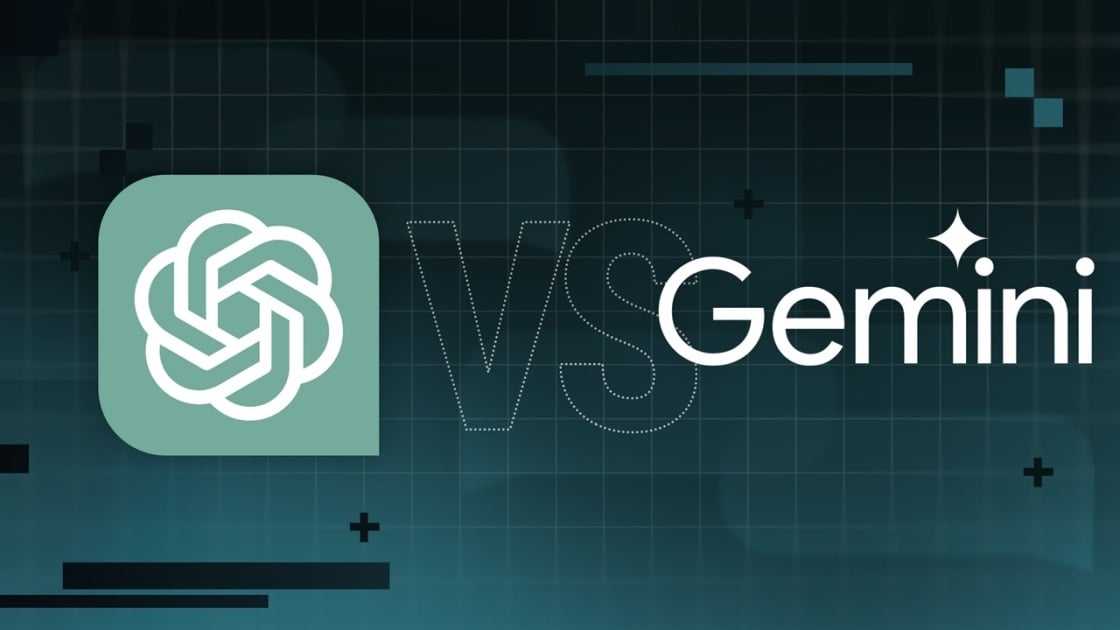
Precio
ChatGPT y Gemini tienen versiones gratuitas que limitan su acceso a características y modelos. Los planes premium para ambos también comienzan en alrededor de $ 20 por mes. Las características de chatbot, como investigaciones profundas, generación de imágenes y videos, búsqueda web y más, son similares en ChatGPT y Gemini. Sin embargo, los planes de Gemini pagados también incluyen el almacenamiento en la nube de Google Drive (a partir de 2TB) y un conjunto robusto de integraciones en las aplicaciones de Google Workspace.
Los niveles de más alta gama de ChatGPT y Gemini desbloquean el aumento de los límites de uso y algunas características únicas, pero el costo mensual prohibitivo de estos planes (como $ 200 para Chatgpt Pro o $ 250 para Gemini Ai Ultra) los pone fuera del alcance de la mayoría de las personas. Las características específicas del plan Pro de ChatGPT, como el modo O1 Pro que aprovecha el poder de cálculo adicional para preguntas particularmente complicadas, no son especialmente relevantes para el consumidor promedio, por lo que no sentirá que se está perdiendo. Sin embargo, es probable que desee las características que son exclusivas del plan Ai Ultra de Gemini, como la generación de videos VEO 3.
Ganador: Géminis
Plataformas
Puede acceder a ChatGPT y Gemini en la web o a través de aplicaciones móviles (Android e iOS). ChatGPT también tiene aplicaciones de escritorio (macOS y Windows) y una extensión oficial para Google Chrome. Gemini no tiene aplicaciones de escritorio dedicadas o una extensión de Chrome, aunque se integra directamente con el navegador.
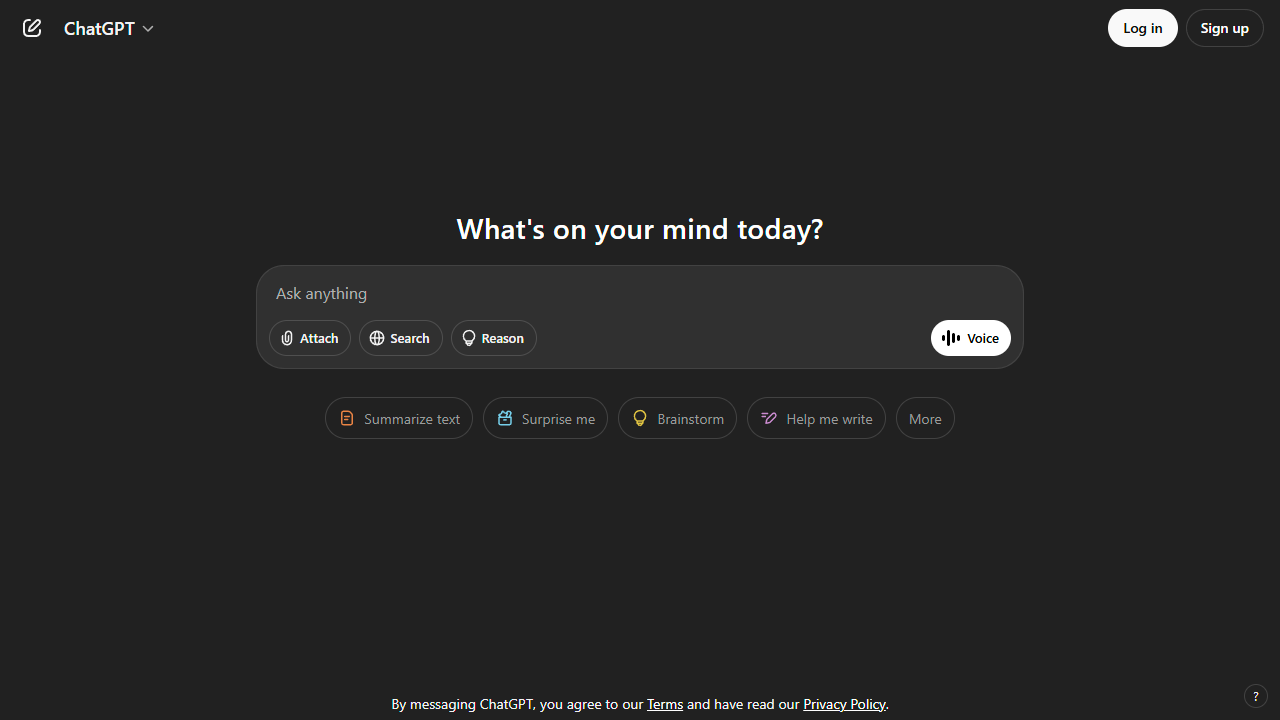
(Crédito: OpenAI/PCMAG)
Chatgpt está disponible en otros lugares, Como a través de Siri. Como se mencionó, puede acceder a Gemini en las aplicaciones de Google, como el calendario, Documento, ConducirGmail, Mapas, Mantener, FotosSábanas, y Música de YouTube. Tanto los modelos de Chatgpt como Gemini también aparecen en sitios como la perplejidad. Sin embargo, obtiene la mayor cantidad de funciones de estos chatbots en sus aplicaciones y portales web dedicados.
Las interfaces de ambos chatbots son en gran medida consistentes en todas las plataformas. Son fáciles de usar y no lo abruman con opciones y alternar. ChatGPT tiene algunas configuraciones más para jugar, como la capacidad de ajustar su personalidad, mientras que la profunda interfaz de investigación de Gemini hace un mejor uso de los bienes inmuebles de pantalla.
Ganador: empate
Modelos de IA
ChatGPT tiene dos series primarias de modelos, la serie 4 (su línea de conversación, insignia) y la Serie O (su compleja línea de razonamiento). Gemini ofrece de manera similar una serie Flash de uso general y una serie Pro para tareas más complicadas.
Los últimos modelos de Chatgpt son O3 y O4-Mini, y los últimos de Gemini son 2.5 Flash y 2.5 Pro. Fuera de la codificación o la resolución de una ecuación, pasará la mayor parte de su tiempo usando los modelos de la serie 4-Series y Flash. A continuación, puede ver cómo funcionan estos modelos en una variedad de tareas. Qué modelo es mejor depende realmente de lo que quieras hacer.
Ganador: empate
Búsqueda web
ChatGPT y Gemini pueden buscar información actualizada en la web con facilidad. Sin embargo, ChatGPT presenta mosaicos de artículos en la parte inferior de sus respuestas para una lectura adicional, tiene un excelente abastecimiento que facilita la vinculación de reclamos con evidencia, incluye imágenes en las respuestas cuando es relevante y, a menudo, proporciona más detalles en respuesta. Gemini no muestra nombres de fuente y títulos de artículos completos, e incluye mosaicos e imágenes de artículos solo cuando usa el modo AI de Google. El abastecimiento en este modo es aún menos robusto; Google relega las fuentes a los caretes que se pueden hacer clic que no resaltan las partes relevantes de su respuesta.
Como parte de sus experiencias de búsqueda en la web, ChatGPT y Gemini pueden ayudarlo a comprar. Si solicita consejos de compra, ambos presentan mosaicos haciendo clic en enlaces a los minoristas. Sin embargo, Gemini generalmente sugiere mejores productos y tiene una característica única en la que puede cargar una imagen tuya para probar digitalmente la ropa antes de comprar.
Ganador: chatgpt
Investigación profunda
ChatGPT y Gemini pueden generar informes que tienen docenas de páginas e incluyen más de 50 fuentes sobre cualquier tema. La mayor diferencia entre los dos se reduce al abastecimiento. Gemini a menudo cita más fuentes que CHATGPT, pero maneja el abastecimiento en informes de investigación profunda de la misma manera que lo hace en la búsqueda en modo AI, lo que significa caretas que se puede hacer clic sin destacados en el texto. Debido a que es más difícil conectar las afirmaciones en los informes de Géminis a fuentes reales, es más difícil creerles. El abastecimiento claro de ChatGPT con destacados en el texto es más fácil de confiar. Sin embargo, Gemini tiene algunas características de calidad de vida en ChatGPT, como la capacidad de exportar informes formateados correctamente a Google Docs con un solo clic. Su tono también es diferente. Los informes de ChatGPT se leen como publicaciones de foro elaboradas, mientras que los informes de Gemini se leen como documentos académicos.
Ganador: chatgpt
Generación de imágenes
La generación de imágenes de ChatGPT impresiona independientemente de lo que solicite, incluso las indicaciones complejas para paneles o diagramas cómicos. No es perfecto, pero los errores y la distorsión son mínimos. Gemini genera imágenes visualmente atractivas más rápido que ChatGPT, pero rutinariamente incluyen errores y distorsión notables. Con indicaciones complicadas, especialmente diagramas, Gemini produjo resultados sin sentido en las pruebas.
Arriba, puede ver cómo ChatGPT (primera diapositiva) y Géminis (segunda diapositiva) les fue con el siguiente mensaje: “Genere una imagen de un estudio de moda con una decoración simple y rústica que contrasta con el espacio más agradable. Incluya un sofá marrón y paredes de ladrillo”. La imagen de ChatGPT limita los problemas al detalle fino en las hojas de sus plantas y texto en su libro, mientras que la imagen de Gemini muestra problemas más notables en su tubo de cordón y lámpara.
Ganador: chatgpt
¡Obtenga nuestras mejores historias!
Toda la última tecnología, probada por nuestros expertos
Regístrese en el boletín de informes de laboratorio para recibir las últimas revisiones de productos de PCMAG, comprar asesoramiento e ideas.
Al hacer clic en Registrarme, confirma que tiene más de 16 años y acepta nuestros Términos de uso y Política de privacidad.
¡Gracias por registrarse!
Su suscripción ha sido confirmada. ¡Esté atento a su bandeja de entrada!
Generación de videos
La generación de videos de Gemini es la mejor de su clase, especialmente porque ChatGPT no puede igualar su capacidad para producir audio acompañante. Actualmente, Google bloquea el último modelo de generación de videos de Gemini, VEO 3, detrás del costoso plan AI Ultra, pero obtienes más videos realistas que con ChatGPT. Gemini también tiene otras características que ChatGPT no, como la herramienta Flow Filmmaker, que le permite extender los clips generados y el animador AI Whisk, que le permite animar imágenes fijas. Sin embargo, tenga en cuenta que incluso con VEO 3, aún necesita generar videos varias veces para obtener un gran resultado.
En el ejemplo anterior, solicité a ChatGPT y Gemini a mostrarme un solucionador de cubos de Rubik Rubik que resuelva un cubo. La persona en el video de Géminis se ve muy bien, y el audio acompañante es competente. Al final, hay una buena atención al detalle con el marco que se desplaza, simulando la detención de una grabación de selfies. Mientras tanto, Chatgpt luchó con su cubo, distorsionándolo en gran medida.
Ganador: Géminis
Procesamiento de archivos
Comprender los archivos es una fortaleza de ChatGPT y Gemini. Ya sea que desee que respondan preguntas sobre un manual, editen un currículum o le informen algo sobre una imagen, ninguno decepciona. Sin embargo, ChatGPT tiene la ventaja sobre Gemini, ya que ofrece un reconocimiento de imagen ligeramente mejor y respuestas más detalladas cuando pregunta sobre los archivos cargados. Ambos chatbots todavía a veces inventan citas de documentos proporcionados o malinterpretan las imágenes, así que asegúrese de verificar sus resultados.
Ganador: chatgpt
Escritura creativa
Chatgpt y Gemini pueden generar poemas, obras, historias y más competentes. CHATGPT, sin embargo, se destaca entre los dos debido a cuán únicas son sus respuestas y qué tan bien responde a las indicaciones. Las respuestas de Gemini pueden sentirse repetitivas si no calibra cuidadosamente sus solicitudes, y no siempre sigue todas las instrucciones a la carta.
En el ejemplo anterior, solicité ChatGPT (primera diapositiva) y Gemini (segunda diapositiva) con lo siguiente: “Sin hacer referencia a nada en su memoria o respuestas anteriores, quiero que me escriba un poema de verso gratuito. Preste atención especial a la capitalización, enjambment, ruptura de línea y puntuación. Dado que es un verso libre, no quiero un medidor familiar o un esquema de retiro de la rima, pero quiero que tenga un estilo de coohes. ChatGPT logró entregar lo que pedí en el aviso, y eso era distinto de las generaciones anteriores. Gemini tuvo problemas para generar un poema que incorporó cualquier cosa más allá de las comas y los períodos, y su poema anterior se lee de manera muy similar a un poema que generó antes.
Recomendado por nuestros editores
Ganador: chatgpt
Razonamiento complejo
Los modelos de razonamiento complejos de Chatgpt y Gemini pueden manejar preguntas de informática, matemáticas y física con facilidad, así como mostrar de manera competente su trabajo. En las pruebas, ChatGPT dio respuestas correctas un poco más a menudo que Gemini, pero su rendimiento es bastante similar. Ambos chatbots pueden y le darán respuestas incorrectas, por lo que verificar su trabajo aún es vital si está haciendo algo importante o tratando de aprender un concepto.
Ganador: chatgpt
Integración
ChatGPT no tiene integraciones significativas, mientras que las integraciones de Gemini son una característica definitoria. Ya sea que desee obtener ayuda para editar un ensayo en Google Docs, comparta una pestaña Chrome para hacer una pregunta, pruebe una nueva lista de reproducción de música de YouTube personalizada para su gusto o desbloquee ideas personales en Gmail, Gemini puede hacer todo y mucho más. Es difícil subestimar cuán integrales y poderosas son realmente las integraciones de Géminis.
Ganador: Géminis
Asistentes de IA
ChatGPT tiene GPT personalizados, y Gemini tiene gemas. Ambos son asistentes de IA personalizables. Tampoco es una gran actualización sobre hablar directamente con los chatbots, pero los GPT personalizados de terceros agregan una nueva funcionalidad, como el fácil acceso a Canva para editar imágenes generadas. Mientras tanto, terceros no pueden crear gemas, y no puedes compartirlas. Puede permitir que los GPT personalizados accedan a la información externa o tomen acciones externas, pero las GEM no tienen una funcionalidad similar.
Ganador: chatgpt
Contexto Windows y límites de uso
La ventana de contexto de ChatGPT sube a 128,000 tokens en sus planes de nivel superior, y todos los planes tienen límites de uso dinámicos basados en la carga del servidor. Géminis, por otro lado, tiene una ventana de contexto de 1,000,000 token. Google no está demasiado claro en los límites de uso exactos para Gemini, pero también son dinámicos dependiendo de la carga del servidor. Anecdóticamente, no pude alcanzar los límites de uso usando los planes pagados de Chatgpt o Gemini, pero es mucho más fácil hacerlo con los planes gratuitos.
Ganador: Géminis
Privacidad
La privacidad en Chatgpt y Gemini es una bolsa mixta. Ambos recopilan cantidades significativas de datos, incluidos todos sus chats, y usan esos datos para capacitar a sus modelos de IA de forma predeterminada. Sin embargo, ambos le dan la opción de apagar el entrenamiento. Google al menos no recopila y usa datos de Gemini para fines de capacitación en aplicaciones de espacio de trabajo, como Gmail, de forma predeterminada. ChatGPT y Gemini también prometen no vender sus datos o usarlos para la orientación de anuncios, pero Google y OpenAI tienen historias sórdidas cuando se trata de hacks, filtraciones y diversos fechorías digitales, por lo que recomiendo no compartir nada demasiado sensible.
Ganador: empate
-
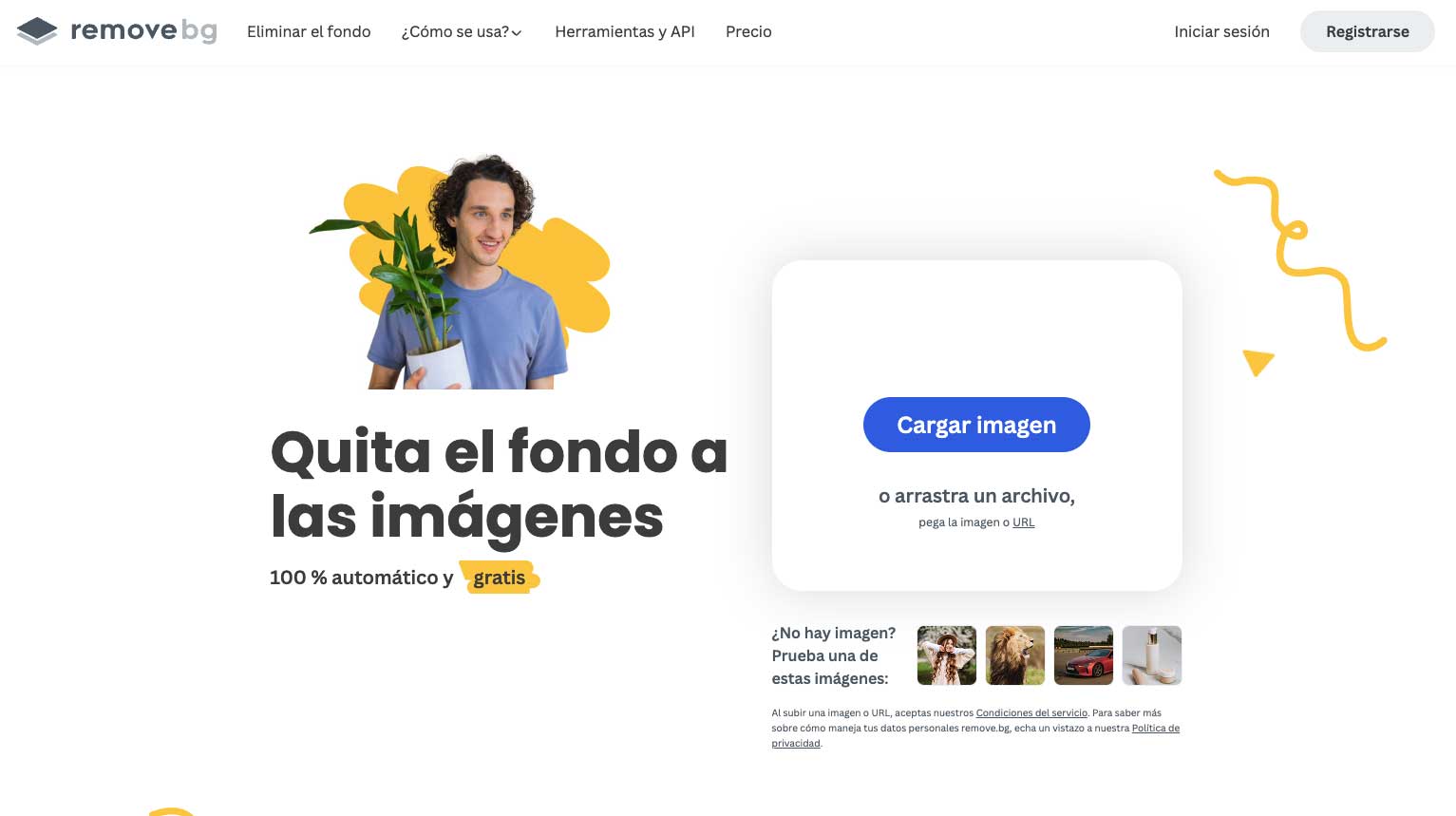
 Startups2 años ago
Startups2 años agoRemove.bg: La Revolución en la Edición de Imágenes que Debes Conocer
-
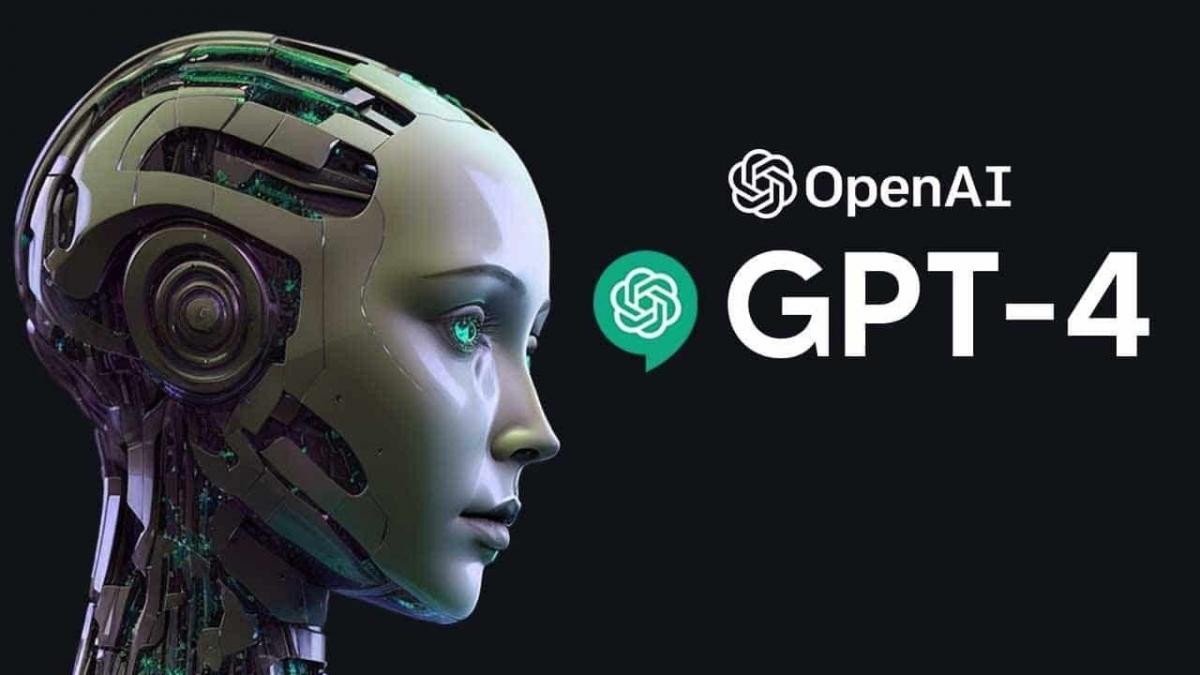
 Tutoriales2 años ago
Tutoriales2 años agoCómo Comenzar a Utilizar ChatGPT: Una Guía Completa para Principiantes
-

 Startups1 año ago
Startups1 año agoStartups de IA en EE.UU. que han recaudado más de $100M en 2024
-
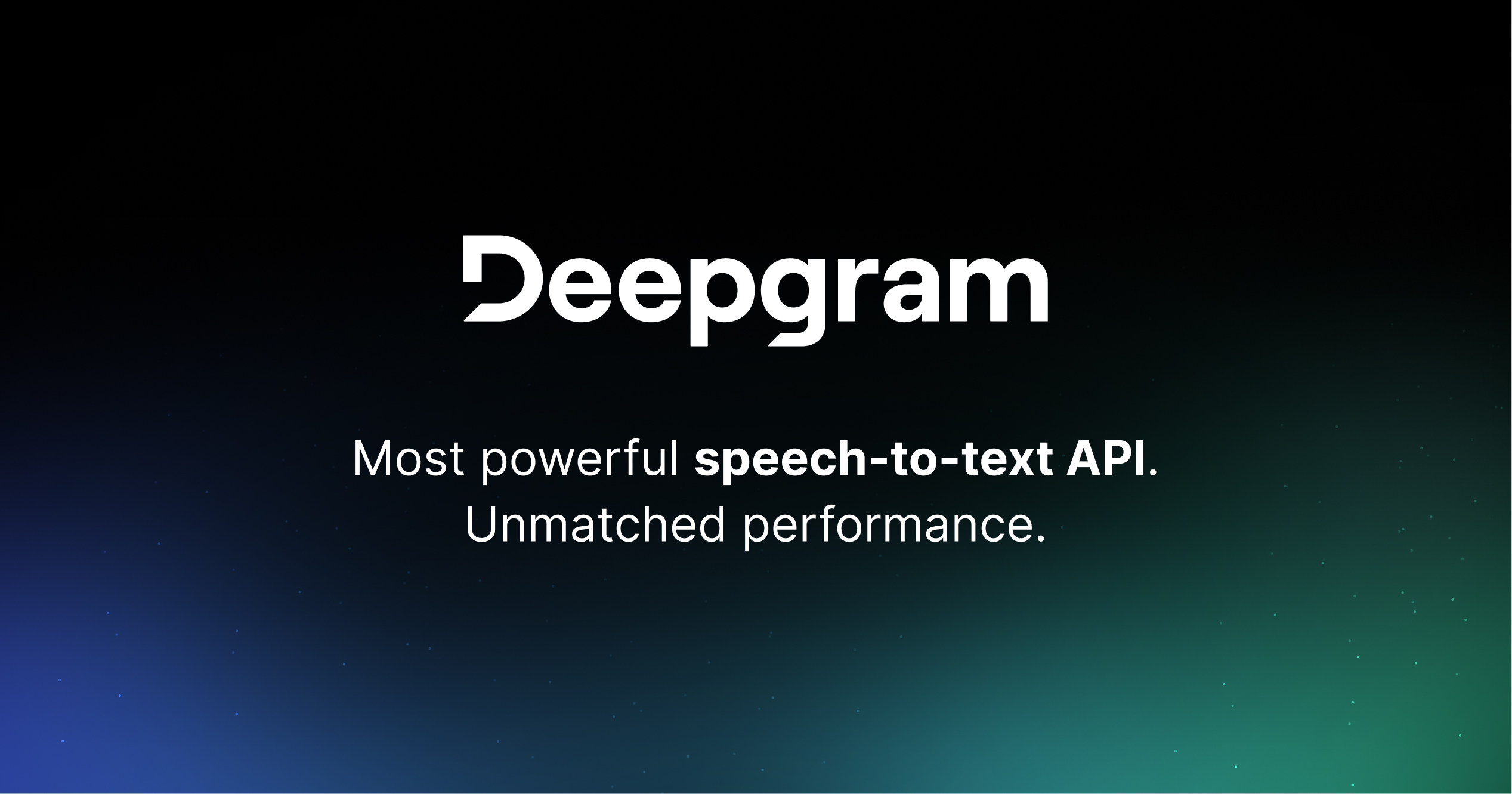
 Startups2 años ago
Startups2 años agoDeepgram: Revolucionando el Reconocimiento de Voz con IA
-

 Recursos2 años ago
Recursos2 años agoCómo Empezar con Popai.pro: Tu Espacio Personal de IA – Guía Completa, Instalación, Versiones y Precios
-
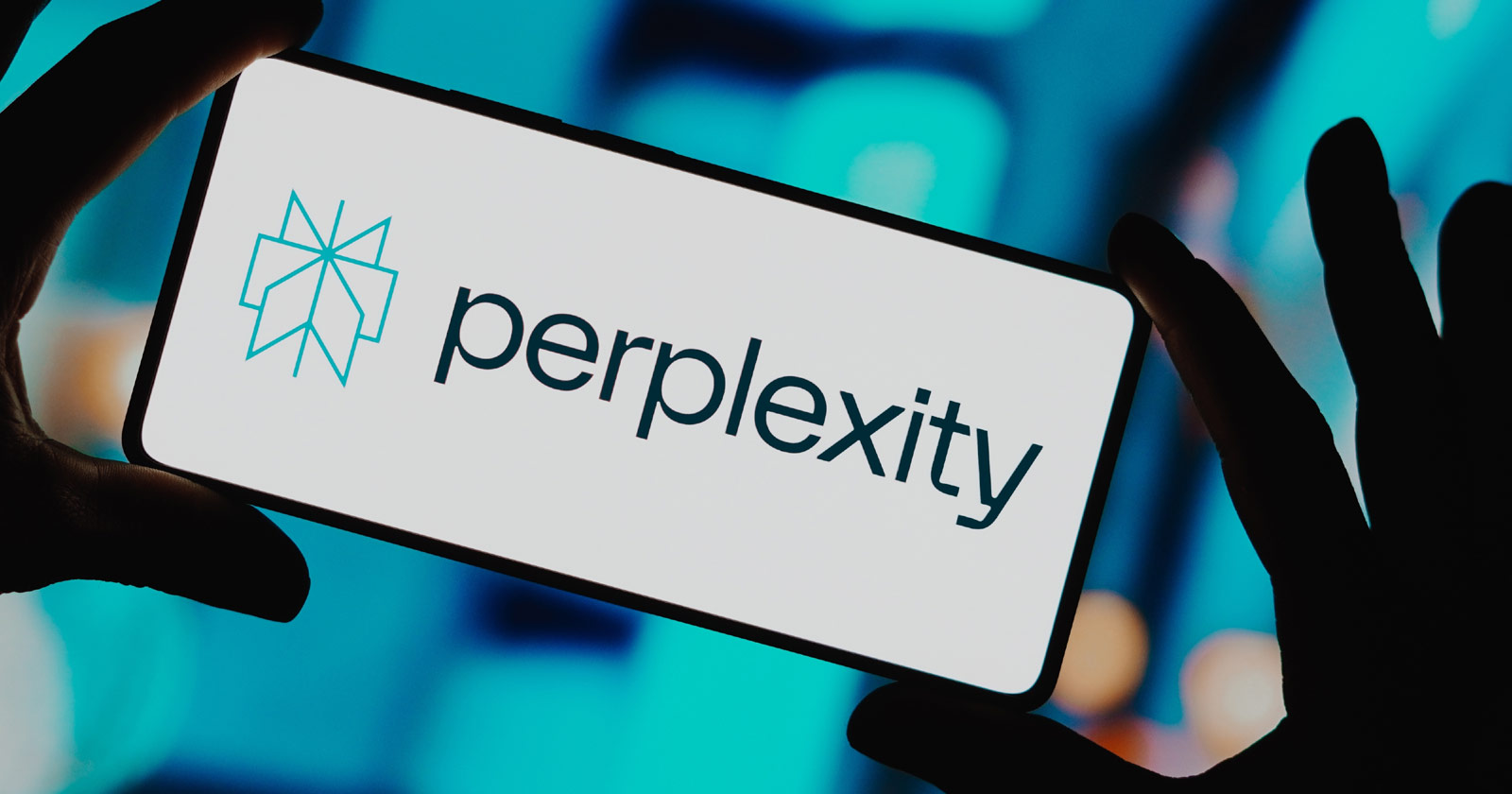
 Recursos2 años ago
Recursos2 años agoPerplexity aplicado al Marketing Digital y Estrategias SEO
-

 Estudiar IA2 años ago
Estudiar IA2 años agoCurso de Inteligencia Artificial de UC Berkeley estratégico para negocios
-
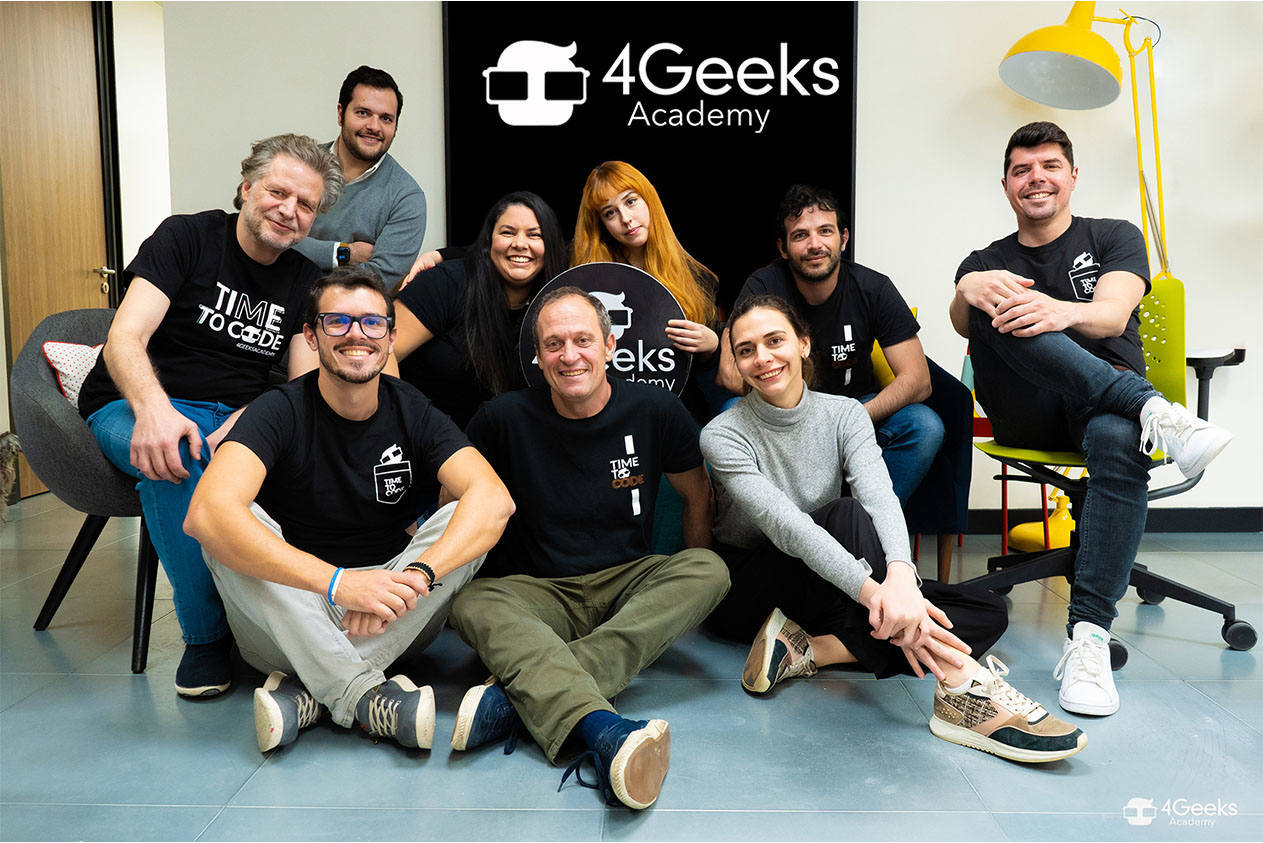
 Estudiar IA2 años ago
Estudiar IA2 años agoCurso de Inteligencia Artificial Aplicada de 4Geeks Academy 2024












